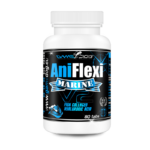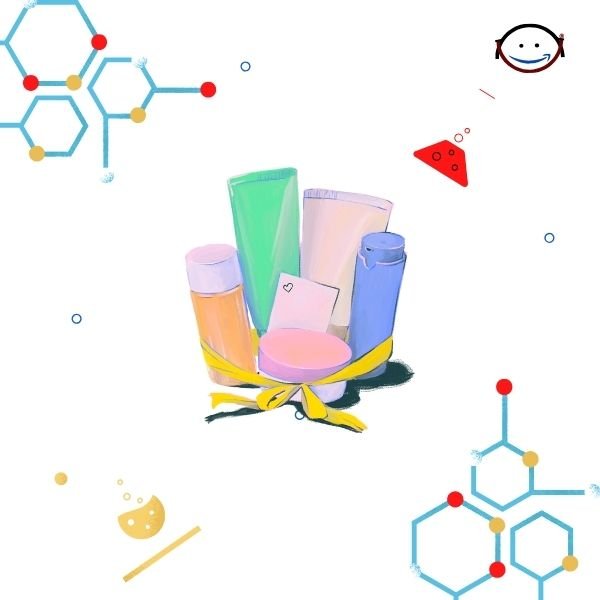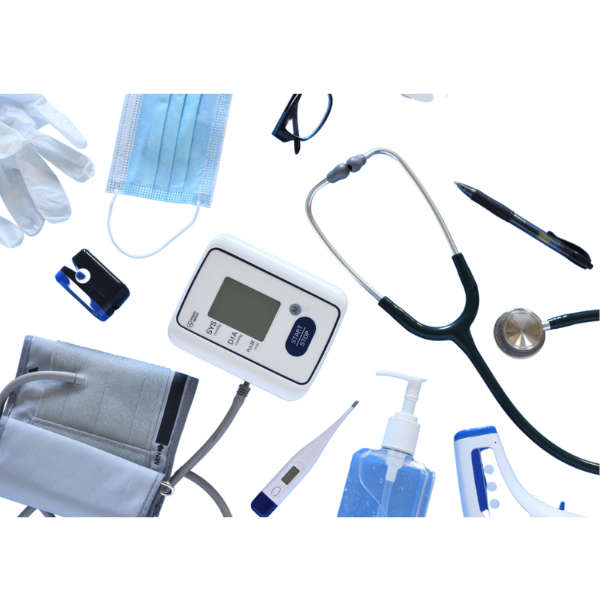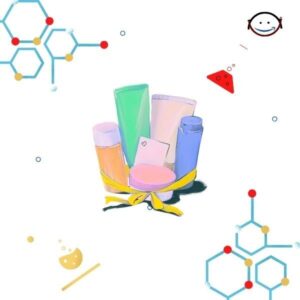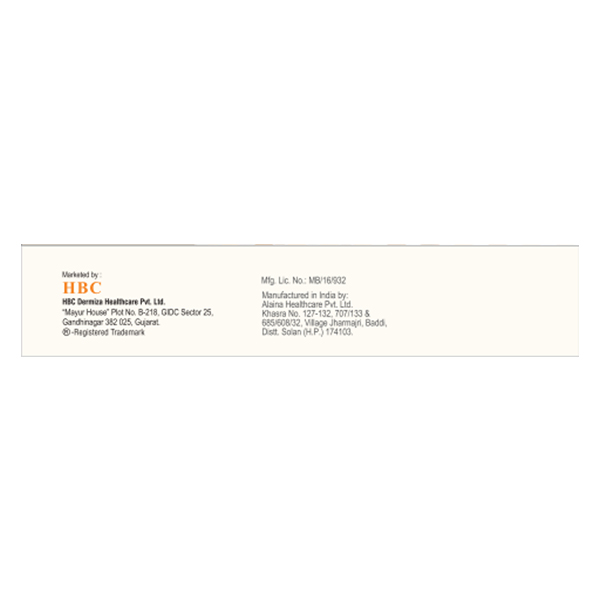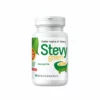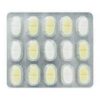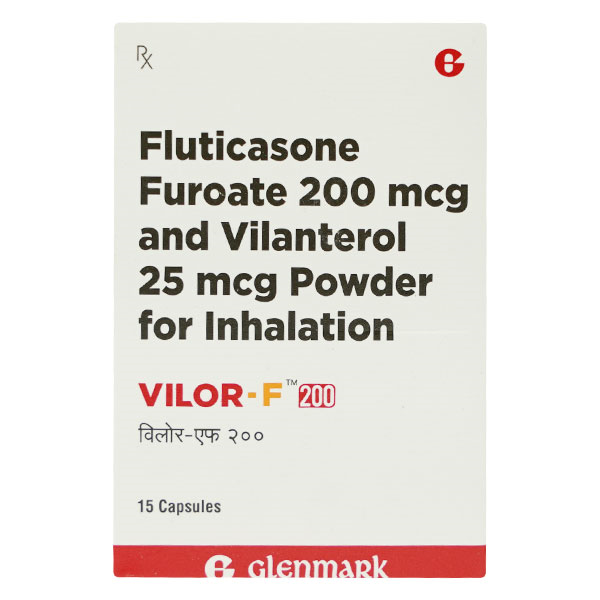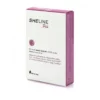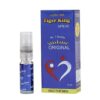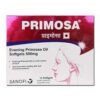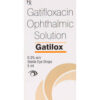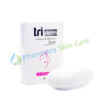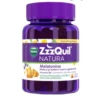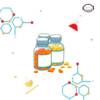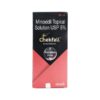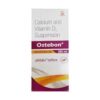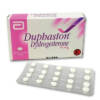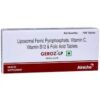-
CLINDAFIN A Gel 20gm ₦37,400.00 QTY: 3
-
Augmentin 625mg 14 Tablets ₦20,000.00 QTY: 1
-
Specchiasol Stevy Green Family Jar 250g ₦17,309.00 QTY: 1
-
PHOTODERM MAX SPF 50 CREAM 40ML ₦37,104.50 QTY: 2
-
GLIMY M1 TABLETS 15`S ₦3,645.50 QTY: 1
-
RIFAKEM 550 STRIP OF 10 TABLETS ₦8,229.50 QTY: 1
-
VILOR F 200 Capsule 15?s ₦45,900.00 QTY: 1
-
SHELINE MORE MENOPAUSE 60SOFTG ₦72,029.00 QTY: 1
-
AMRITVEDA No.1 QUALITY ORIGINAL TIGER KING SPRAY (5ml) ₦221.00 QTY: 3
-
PRIMOSA 500MG PRIMROSE OIL CAPSULES STRIP OF 15 ₦6,476.25 QTY: 2
-
CLINDAFIN N 20 GEL ₦2,681.25 QTY: 2
-
MATNIB 100mg Tablet 10?s ₦73,100.00 QTY: 1
-
Iski 60mg Tablet 10?S ₦23,800.00 QTY: 1
-
GATILOX EYE 5ML DROPS ₦1,874.50 QTY: 4
-
Triderm Fairness & Melasma Soap ₦356.00 QTY: 3
-
Act+Acre Cold Processed Hair Conditioner 296ml ₦70,216.30 QTY: 1
-
La Roche-Posay Anthelios Invisible Anti-Shine Face Mist SPF50+ 75ml ₦22,474.08 QTY: 1
-
Perrigo Paracetamol 500mg Film Coated Tablets 24 Pack ₦4,200.00 QTY: 2
-
ZZZQUIL NATURA MANGO & BAN30PAST ₦19,722.00 QTY: 2
-
Tutrim Co-trimoxazole 50ml ₦300.00 QTY: 1
-
CHEKFALL 5% 60ML TOPICAL SOLUTION ₦16,047.50 QTY: 1
-
MUCARYL AB Tablet 10?s ₦37,400.00 QTY: 1
-
OSTEBON SUSP 200ML ₦1,709.75 QTY: 1
-
ROST F STRIP OF 10 TABLETS ₦2,475.00 QTY: 1
-
PIN OM H 40MG TABLET 15?S ₦7,868.50 QTY: 1
-
Duphaston Dydrogesterone 10mg Tablet ₦5,800.00 QTY: 1
-
GEROZ LP TABLET 10?S ₦5,156.25 QTY: 1
-
Snack Cocco Enervit Protein 8x27g ₦17,556.00 QTY: 2
-
CoeNAC Ab Tablet 10?s ₦37,400.00 QTY: 1
Customer matched zone "Lagos Delivery Options"
Sort by:
193–208 of 4627 Results
-
SaleApsol 5%Apsol 5% is indicated for the treatment of aphthous ulcers.Theropeutic ClassDrugs for Aphthous ulcerPharmacologyThe mechanism of action by which Apsol 5% accelerates healing of aphthous ulcers is unknown. In vitro studies have demonstrated Apsol 5% to be a potent inhibitor of the formation and release of inflammatory mediators (histamine and leukotrienes) from mast cells, neutrophils and mononuclear cells. Given orally to animals, Apsol 5% has demonstrated anti-allergic and anti-inflammatory activities and has been shown to suppress both immediate and delayed type hypersensitivity reactions. The relevance of these activities of Apsol 5% to its effects on aphthous ulcers has not been established.Dosage & Administration of Apsol 5%Adults (over 18 years of age): Apply the paste as soon as possible after noticing the symptoms of an aphthous ulcer. Continue to use the paste four times daily, preferably following oral hygiene after breakfast, lunch, dinner, and at bedtime. Dry the ulcer(s) by gently patting it with a soft, clean cloth. Wash hands before applying. Moisten the tip of the index finger & squeeze a dab of paste approximately ? inch (0.5 cm) on to the finger tip. Gently dab the paste on to each ulcer. Repeat the process if more than one ulcer are present. Wash hands after application. Use the paste until the ulcer heals. If significant healing or pain relief has not occurred in 10 days, consultation with the physician is required.Dosage of Apsol 5% Apply the paste as soon as possible after noticing the symptoms of an aphthous ulcer. Continue to use the paste four times daily, preferably following oral hygiene after breakfast, lunch, dinner, and at bedtime. Dry the ulcer(s) by gently patting it with a soft, clean cloth. Wash hands before applying. Moisten the tip of the index finger. Squeeze a dab of paste approximately ? inch (0.5 cm) onto a fingertip. Gently dab the paste onto the ulcer. Repeat the process if more than one ulcer are present. Wash hands after application. Wash eyes promptly if they should come in contact with the paste. Use the paste until the ulcer heals. If significant healing or pain relief has not occurred in 10 days, consultation with the physician is required. ContraindicationsApsol 5% oral paste is contraindicated in patients with known hypersensitivity to Apsol 5% or other ingredients in the formulation.Side Effects of Apsol 5%Adverse reactions reported by 1-2% of patients were transient pain, stinging and/or burning at the site of application. Infrequent (<1%) adverse reactions in the clinical studies were contact mucositis, nausea, and diarrhea.Pregnancy & LactationPregnancy category B. No adverse fetal effects were observed during teratological studies on animals, but there are no adequate and well-controlled studies in pregnant women. So this drug should be used during pregnancy only if clearly needed.Lactation: Apsol 5% was found in the milk of lactating rats; therefore, caution should be exercised when administering Apsol 5% oral paste to a nursing woman.Precautions & WarningsWash hands immediately after applying Apsol 5% oral paste directly to ulcers with the finger tips. In the event that a rash or contact mucositis occurs, discontinue use.Overdose Effects of Apsol 5%Ingestion of a full tube of 5 grams of paste would result in systemic exposure well below the maximum nontoxic dose of Apsol 5% in animals. Gastrointestinal upset such as diarrhea and vomiting could result from an overdose.Storage ConditionsStore in a cool & dry place. Protect from light. Keep out of reach of the childrenUse In Special PopulationsSafety and effectiveness of Apsol 5% oral paste in pediatric patients have not been established.Mode Of ActionThe mechanism of action by which Apsol 5% accelerates healing of aphthous ulcers is unknown. In vitro studies have demonstrated Apsol 5% to be a potent inhibitor of the formation and release of inflammatory mediators (histamine and leukotrienes) from mast cells, neutrophils and mononuclear cells. Given orally to animals, Apsol 5% has demonstrated anti-allergic and anti-inflammatory activities and has been shown to suppress both immediate and delayed-type hypersensitivity reactions. The relevance of these activities of Apsol 5% to its effects on aphthous ulcers has not been established. After a single oral application of 100 mg of paste (5 mg Apsol 5%), maximal serum levels are observed at 2.4 hours. Most of the systemic absorption of Apsol 5% is via the gastrointestinal tract and the amount absorbed directly through the active ulcer is not a significant portion of the applied dose. The half-life for elimination was 3.5 +/- 1.1 hours in healthy individuals.PregnancyUS FDA pregnancy category B. Teratology studies were performed with animals at doses up to two hundred and six hundred times, respectively, the projected human daily dose. No adverse fetal effects were observed. There are no adequate and well-controlled studies in pregnant women. Because animal reproduction studies are not always predictive of human response, this drug should be used during pregnancy only if clearly needed. Apsol 5% was found in the milk of lactating rats; therefore, caution should be exercised when administering Apsol 5% oral paste to a nursing woman.Pediatric UsesPediatric Use: Safety and effectiveness of Apsol 5% oral paste in pediatric patients have not been established.Sku: 1736104266-3506
Apsol5%
₦4,400.00Original price was: ₦4,400.00.₦3,960.00Current price is: ₦3,960.00.₦4,400.00Original price was: ₦4,400.00.₦3,960.00Current price is: ₦3,960.00. Add to basket Quick View -
SaleAptin M 50 mg+500 mgAptin M 50 mg+500 mg tablet is indicated as an adjunct to diet and exercises to improve glycaemic control in patients with type 2 diabetes mellitus whose diabetes is not adequately controlled on Metformin Hydrochloride or Vildagliptin alone or who are already treated with the combination of Vildagliptin and Metformin Hydrochloride, as separate tablets.Theropeutic ClassCombination Oral hypoglycemic preparationsPharmacologyVildagliptin acts primarily by inhibiting DPP-4 (Dipeptidyl peptidase-4), the enzyme responsible for the degradation of the incretin hormones GLP-1 (glucagon-like peptide-1) and GIP (glucose-dependent insulinotropic polypeptide). The administration of Vildagliptin results in a rapid and complete inhibition of DPP-4 activity resulting in increased fasting and postprandial endogenous levels of the incretin hormones GLP-1 and GIP. By increasing the endogenous levels of these incretin hormones, Vildagliptin increases insulin secretion from the pancreatic beta cell and decreases glucagon secretion from alpha cell. The enhanced increase in the insulin/glucagon ratio during hyperglycaemia due to increased incretin hormone levels results in a decrease in fasting and postprandial hepatic glucose production, leading to reduced glycaemia.Metformin Hydrochloride is a biguanide type oral antihyperglycemic drug used in the management of type 2 diabetes. It lowers both basal and postprandial plasma glucose. Its mechanism of action is different from those of sulfonylureas and it does not produce hypoglycemia. Glucomin decreases hepatic glucose production, decreases intestinal absorption of glucose and improves insulin sensitivity by an increase in peripheral glucose uptake and utilization.Dosage & Administration of Aptin M 50 mg+500 mgAdults: Based on the patient's current dose of Metformin, Aptin M 50 mg+500 mg may be initiated at twice daily, 1 tablet in the morning and the other in the evening. Patients receiving Vildagliptin and Metformin from separate tablets may be switched to this combination containing the same doses of each component. Doses higher than 100 mg of vildagliptin are not recommended. There is no clinical experience of Vildagliptin and Metformin in triple combination with other antidiabetic agents. Taking this combination with or just after food may reduce gastrointestinal symptoms associated with Metformin.Interaction of Aptin M 50 mg+500 mgNo clinically relevant pharmacokinetic interaction was observed when Vildagliptin (100 mg once daily) was co-administered with Metformin Hydrochloride (1,000 mg once daily). Aptin M 50 mg+500 mg has a low potential for drug interactions. Since Vildagliptin is not a cytochrome P (CYP) 450 enzyme substrate nor does it inhibit nor induces CYP 450 enzymes, it is not likely to interact with co-medications that are substrates, inhibitors or inducers of these enzymes. As a result of these studies no clinically relevant interactions with other oral antidiabetics (glibenclamide, pioglitazone, metformin hydrochloride), amlodipine, digoxin, ramipril, simvastatin, valsartan or warfarin were observed after co-administration with vildagliptin. On the other hand, furosemide, nifedipine and glyburide increase Cmax and blood AUC of Metformin with no change in renal clearance of Metformin.ContraindicationsAptin M 50 mg+500 mg is contraindicated in patients with known hypersensitivity to Vildagliptin or Metformin Hydrochloride or to any of the excipients. It is contraindicated in patients with renal disease or renal dysfunction, acute myocardial infarction, and septicaemia. It is also contraindicated in patients with congestive heart failure patients and in patients with acute or chronic metabolic acidosis, including diabetic ketoacidosis, with or without coma. It should be temporarily discontinued in patients undergoing radiologic studies involving intravascular administration of iodinated contrast materials, because use of such products may result in acute alteration of renal function.Side Effects of Aptin M 50 mg+500 mgThe most common side effects are headache, tremor, dizziness, nausea, hypoglycaemia etc.Pregnancy & LactationThere are no adequate and well controlled studies in pregnant women and therefore, this combination should not be used during pregnancy unless the potential benefit justifies the potential risk to the foetus.?No studies have been conducted with the components of this combination. As it is not known whether Vildagliptin and/or Metformin Hydrochloride is excreted in human milk this combination should not be administered to breast-feeding women.Precautions & WarningsLactic acidosis can occur due to Metformin accumulation. If metabolic acidosis is suspected, treatment should be discontinued and the patient should be hospitalized immediately. Serum creatinine should be monitored at least once a year in patients with normal renal function and 2?4 times a year in patients with serum creatinine levels at the upper limit of normal and in elderly patients. Special caution should be exercised in elderly patients where renal function may become impaired (e.g. when initiating antihypertensives, diuretics or NSAIDs). It is recommended that Liver Function Tests (LFTs) are monitored prior to initiation of this drug, at three-monthly intervals in the first year and periodically thereafter. If transaminase levels are increased, patients should be monitored with a second liver function evaluation to confirm the finding and be followed thereafter with frequent liver function tests until the abnormality return to normal. If AST or ALT persist at 3 x ULN, Vildagliptin & Metformin tablets should be stopped Patients who develop jaundice or other signs of liver dysfunction. Following withdrawal of treatment with Vildagliptin & Metformin and LFT normalization, treatment with Vildagliptin & Metformin should not be reinitiated. Aptin M 50 mg+500 mg tablets should be discontinued 48 hours before elective surgery with general anaesthesia and should not usually be resumed earlier than 48 hours afterwards.Storage ConditionsKeep in a dry place away from light and heat. Keep out of the reach of children.Use In Special PopulationsUse in pediatric patients: The safety and effectiveness of this combination in pediatric patients have not been established. Therefore, Aptin M 50 mg+500 mg is not recommended for use in children below 18 years of age. Use in geriatric patients: As Metformin is excreted via the kidney, and elderly patients have a tendency to decreased renal function, elderly patients taking this combination should have their renal function monitored regularly. This combination should only be used in elderly patients with normal renal function. Patients with renal impairment: This combination should not be used in patients with renal failure or renal dysfunction, e.g. serum creatinine levels > 1.5 mg/dl (>135 micro mol/L) in males and > 1.4 mg/dl (>110 micro mol/L) in females. Patients with hepatic impairment: This combination is not recommended in patients with hepatic impairment including patients with a pre-treatment ALT or AST >3 X the upper limit of normal.Drug ClassesCombination Oral hypoglycemic preparationsMode Of ActionVildagliptin acts primarily by inhibiting DPP-4 (Dipeptidyl peptidase-4), the enzyme responsible for the degradation of the incretin hormones GLP-1 (glucagon-like peptide-1) and GIP (glucose-dependent insulinotropic polypeptide). The administration of Vildagliptin results in a rapid and complete inhibition of DPP-4 activity resulting in increased fasting and postprandial endogenous levels of the incretin hormones GLP-1 and GIP. By increasing the endogenous levels of these incretin hormones, Vildagliptin increases insulin secretion from the pancreatic beta cell and decreases glucagon secretion from alpha cell. The enhanced increase in the insulin/glucagon ratio during hyperglycaemia due to increased incretin hormone levels results in a decrease in fasting and postprandial hepatic glucose production, leading to reduced glycaemia.Metformin Hydrochloride is a biguanide type oral antihyperglycemic drug used in the management of type 2 diabetes. It lowers both basal and postprandial plasma glucose. Its mechanism of action is different from those of sulfonylureas and it does not produce hypoglycemia. Glucomin decreases hepatic glucose production, decreases intestinal absorption of glucose and improves insulin sensitivity by an increase in peripheral glucose uptake and utilization.PregnancyThere are no adequate and well controlled studies in pregnant women and therefore, this combination should not be used during pregnancy unless the potential benefit justifies the potential risk to the foetus.?No studies have been conducted with the components of this combination. As it is not known whether Vildagliptin and/or Metformin Hydrochloride is excreted in human milk this combination should not be administered to breast-feeding women.Pediatric UsesUse in pediatric patients: The safety and effectiveness of Aptin M 50 mg+500 mg in pediatric patients have not been established. Therefore, this combination is not recommended for use in children below 18 years of age. Use in geriatric patients: As Metformin is excreted via the kidney, and elderly patients have a tendency to decreased renal function, elderly patients taking this combination should have their renal function monitored regularly. This combination should only be used in elderly patients with normal renal function. Patients with renal impairment: This combination should not be used in patients with renal failure or renal dysfunction, e.g. serum creatinine levels > 1.5 mg/dl (>135 micro mol/L) in males and > 1.4 mg/dl (>110 micro mol/L) in females. Patients with hepatic impairment: This combination is not recommended in patients with hepatic impairment including patients with a pre-treatment ALT or AST >3 X the upper limit of normal.Sku: 1736105206-3783
Aptin M50 mg+500 mg
₦13,750.00Original price was: ₦13,750.00.₦12,375.00Current price is: ₦12,375.00.₦13,750.00Original price was: ₦13,750.00.₦12,375.00Current price is: ₦12,375.00. Add to basket Quick View -
SaleAptin M 50 mg+850 mgAptin M 50 mg+850 mg tablet is indicated as an adjunct to diet and exercises to improve glycaemic control in patients with type 2 diabetes mellitus whose diabetes is not adequately controlled on Metformin Hydrochloride or Vildagliptin alone or who are already treated with the combination of Vildagliptin and Metformin Hydrochloride, as separate tablets.Theropeutic ClassCombination Oral hypoglycemic preparationsPharmacologyVildagliptin acts primarily by inhibiting DPP-4 (Dipeptidyl peptidase-4), the enzyme responsible for the degradation of the incretin hormones GLP-1 (glucagon-like peptide-1) and GIP (glucose-dependent insulinotropic polypeptide). The administration of Vildagliptin results in a rapid and complete inhibition of DPP-4 activity resulting in increased fasting and postprandial endogenous levels of the incretin hormones GLP-1 and GIP. By increasing the endogenous levels of these incretin hormones, Vildagliptin increases insulin secretion from the pancreatic beta cell and decreases glucagon secretion from alpha cell. The enhanced increase in the insulin/glucagon ratio during hyperglycaemia due to increased incretin hormone levels results in a decrease in fasting and postprandial hepatic glucose production, leading to reduced glycaemia.Metformin Hydrochloride is a biguanide type oral antihyperglycemic drug used in the management of type 2 diabetes. It lowers both basal and postprandial plasma glucose. Its mechanism of action is different from those of sulfonylureas and it does not produce hypoglycemia. Glucomin decreases hepatic glucose production, decreases intestinal absorption of glucose and improves insulin sensitivity by an increase in peripheral glucose uptake and utilization.Dosage & Administration of Aptin M 50 mg+850 mgAdults: Based on the patient's current dose of Metformin, Aptin M 50 mg+850 mg may be initiated at twice daily, 1 tablet in the morning and the other in the evening. Patients receiving Vildagliptin and Metformin from separate tablets may be switched to this combination containing the same doses of each component. Doses higher than 100 mg of vildagliptin are not recommended. There is no clinical experience of Vildagliptin and Metformin in triple combination with other antidiabetic agents. Taking this combination with or just after food may reduce gastrointestinal symptoms associated with Metformin.Interaction of Aptin M 50 mg+850 mgNo clinically relevant pharmacokinetic interaction was observed when Vildagliptin (100 mg once daily) was co-administered with Metformin Hydrochloride (1,000 mg once daily). Aptin M 50 mg+850 mg has a low potential for drug interactions. Since Vildagliptin is not a cytochrome P (CYP) 450 enzyme substrate nor does it inhibit nor induces CYP 450 enzymes, it is not likely to interact with co-medications that are substrates, inhibitors or inducers of these enzymes. As a result of these studies no clinically relevant interactions with other oral antidiabetics (glibenclamide, pioglitazone, metformin hydrochloride), amlodipine, digoxin, ramipril, simvastatin, valsartan or warfarin were observed after co-administration with vildagliptin. On the other hand, furosemide, nifedipine and glyburide increase Cmax and blood AUC of Metformin with no change in renal clearance of Metformin.ContraindicationsAptin M 50 mg+850 mg is contraindicated in patients with known hypersensitivity to Vildagliptin or Metformin Hydrochloride or to any of the excipients. It is contraindicated in patients with renal disease or renal dysfunction, acute myocardial infarction, and septicaemia. It is also contraindicated in patients with congestive heart failure patients and in patients with acute or chronic metabolic acidosis, including diabetic ketoacidosis, with or without coma. It should be temporarily discontinued in patients undergoing radiologic studies involving intravascular administration of iodinated contrast materials, because use of such products may result in acute alteration of renal function.Side Effects of Aptin M 50 mg+850 mgThe most common side effects are headache, tremor, dizziness, nausea, hypoglycaemia etc.Pregnancy & LactationThere are no adequate and well controlled studies in pregnant women and therefore, this combination should not be used during pregnancy unless the potential benefit justifies the potential risk to the foetus.?No studies have been conducted with the components of this combination. As it is not known whether Vildagliptin and/or Metformin Hydrochloride is excreted in human milk this combination should not be administered to breast-feeding women.Precautions & WarningsLactic acidosis can occur due to Metformin accumulation. If metabolic acidosis is suspected, treatment should be discontinued and the patient should be hospitalized immediately. Serum creatinine should be monitored at least once a year in patients with normal renal function and 2?4 times a year in patients with serum creatinine levels at the upper limit of normal and in elderly patients. Special caution should be exercised in elderly patients where renal function may become impaired (e.g. when initiating antihypertensives, diuretics or NSAIDs). It is recommended that Liver Function Tests (LFTs) are monitored prior to initiation of this drug, at three-monthly intervals in the first year and periodically thereafter. If transaminase levels are increased, patients should be monitored with a second liver function evaluation to confirm the finding and be followed thereafter with frequent liver function tests until the abnormality return to normal. If AST or ALT persist at 3 x ULN, Vildagliptin & Metformin tablets should be stopped Patients who develop jaundice or other signs of liver dysfunction. Following withdrawal of treatment with Vildagliptin & Metformin and LFT normalization, treatment with Vildagliptin & Metformin should not be reinitiated. Aptin M 50 mg+850 mg tablets should be discontinued 48 hours before elective surgery with general anaesthesia and should not usually be resumed earlier than 48 hours afterwards.Storage ConditionsKeep in a dry place away from light and heat. Keep out of the reach of children.Use In Special PopulationsUse in pediatric patients: The safety and effectiveness of this combination in pediatric patients have not been established. Therefore, Aptin M 50 mg+850 mg is not recommended for use in children below 18 years of age. Use in geriatric patients: As Metformin is excreted via the kidney, and elderly patients have a tendency to decreased renal function, elderly patients taking this combination should have their renal function monitored regularly. This combination should only be used in elderly patients with normal renal function. Patients with renal impairment: This combination should not be used in patients with renal failure or renal dysfunction, e.g. serum creatinine levels > 1.5 mg/dl (>135 micro mol/L) in males and > 1.4 mg/dl (>110 micro mol/L) in females. Patients with hepatic impairment: This combination is not recommended in patients with hepatic impairment including patients with a pre-treatment ALT or AST >3 X the upper limit of normal.Drug ClassesCombination Oral hypoglycemic preparationsMode Of ActionVildagliptin acts primarily by inhibiting DPP-4 (Dipeptidyl peptidase-4), the enzyme responsible for the degradation of the incretin hormones GLP-1 (glucagon-like peptide-1) and GIP (glucose-dependent insulinotropic polypeptide). The administration of Vildagliptin results in a rapid and complete inhibition of DPP-4 activity resulting in increased fasting and postprandial endogenous levels of the incretin hormones GLP-1 and GIP. By increasing the endogenous levels of these incretin hormones, Vildagliptin increases insulin secretion from the pancreatic beta cell and decreases glucagon secretion from alpha cell. The enhanced increase in the insulin/glucagon ratio during hyperglycaemia due to increased incretin hormone levels results in a decrease in fasting and postprandial hepatic glucose production, leading to reduced glycaemia.Metformin Hydrochloride is a biguanide type oral antihyperglycemic drug used in the management of type 2 diabetes. It lowers both basal and postprandial plasma glucose. Its mechanism of action is different from those of sulfonylureas and it does not produce hypoglycemia. Glucomin decreases hepatic glucose production, decreases intestinal absorption of glucose and improves insulin sensitivity by an increase in peripheral glucose uptake and utilization.PregnancyThere are no adequate and well controlled studies in pregnant women and therefore, this combination should not be used during pregnancy unless the potential benefit justifies the potential risk to the foetus.?No studies have been conducted with the components of this combination. As it is not known whether Vildagliptin and/or Metformin Hydrochloride is excreted in human milk this combination should not be administered to breast-feeding women.Pediatric UsesUse in pediatric patients: The safety and effectiveness of Aptin M 50 mg+850 mg in pediatric patients have not been established. Therefore, this combination is not recommended for use in children below 18 years of age. Use in geriatric patients: As Metformin is excreted via the kidney, and elderly patients have a tendency to decreased renal function, elderly patients taking this combination should have their renal function monitored regularly. This combination should only be used in elderly patients with normal renal function. Patients with renal impairment: This combination should not be used in patients with renal failure or renal dysfunction, e.g. serum creatinine levels > 1.5 mg/dl (>135 micro mol/L) in males and > 1.4 mg/dl (>110 micro mol/L) in females. Patients with hepatic impairment: This combination is not recommended in patients with hepatic impairment including patients with a pre-treatment ALT or AST >3 X the upper limit of normal.Sku: 1736104133-3467
Aptin M50 mg+850 mg
₦13,750.00Original price was: ₦13,750.00.₦12,375.00Current price is: ₦12,375.00.₦13,750.00Original price was: ₦13,750.00.₦12,375.00Current price is: ₦12,375.00. Add to basket Quick View -
SaleAptin 50 mgAptin 50 mg is indicated as an adjunct to diet and exercise to improve glycemic control in patients with type 2 diabetes mellitus as monotherapy and in dual combination with Metformin, a Sulphonylurea, a Thiazolidinedione, or Insulin when diet, exercise and a single antidiabetic agent do not result in adequate glycemic control.Theropeutic ClassDipeptidyl Peptidase-4 (DPP-4) inhibitorPharmacologyAptin 50 mg is a dipeptidyl peptidase-4 (DPP-4) inhibitor, which is believed to exert its actions in patients with type 2 diabetes by slowing the inactivation of incretin hormones. Incretin hormones, including glucagon-like peptide-1 (GLP-1) and glucose-dependent insulinotropic polypeptide (GIP), are released by the intestine throughout the day, and levels are increased in response to a meal. These hormones are rapidly inactivated by the enzyme, DPP-4. The incretins are part of an endogenous system involved in the physiologic regulation of glucose homeostasis. When blood glucose concentrations are normal or elevated, GLP-1 and GIP increase insulin synthesis and release from pancreatic beta cells by intracellular signaling pathways involving cyclic AMP. GLP-1 also lowers glucagon secretion from pancreatic alpha cells, leading to reduced hepatic glucose production. By increasing and prolonging active incretin levels, Aptin 50 mg increases insulin release and decreases glucagon levels in the circulation in a glucose-dependent manner.Dosage & Administration of Aptin 50 mgThe recommended dose of Aptin 50 mg is- 50 mg or 100 mg daily for monotherapy. 50 mg twice daily (morning and evening) when used in dual combination with Metformin or a Thiazolidinedione; 50 mg once daily in the morning when used in dual combination with a Sulphonylurea. Aptin 50 mg may be taken with or without a meal. No dosage adjustment is required in the elderly, or in patients with mild renal impairment.Dosage of Aptin 50 mgThe recommended dose of Aptin 50 mg is- 50 mg or 100 mg daily for monotherapy. 50 mg twice daily (morning and evening) when used in dual combination with Metformin or a Thiazolidinedione; 50 mg once daily in the morning when used in dual combination with a Sulphonylurea. Aptin 50 mg may be taken with or without a meal. No dosage adjustment is required in the elderly, or in patients with mild renal impairment.Pediatric use: Aptin 50 mg is not recommended in patients 18 years of age.Interaction of Aptin 50 mgIn pharmacokinetic studies, no interactions were seen with pioglitazone, metformin, glibenclamide, digoxin, warfarin, amlodipine, ramipril, valsartan or simvastatin. As with other oral antidiabetic medicinal products the glucose-lowering effect of Aptin 50 mg may be reduced by certain active substances, including thiazides, corticosteroids, thyroid products and sympathomimetics.ContraindicationsAptin 50 mg is contraindicated in patients with: Hypersensitivity to the active substance or to any of the excipients Patients with moderate to severe renalImpairment Patients with Hepatic Impairment: patients with pre-treatment alanine aminotransferase (ALT) or aspartate aminotrasferase (AST) >3 times the upper limit of normal (ULN). Patients with type 1 diabetes Side Effects of Aptin 50 mgThe majority of adverse reactions were mild and transient, not requiring treatment discontinuations. A rare case of hepatic dysfunction is seen. Clinical trials of up to and more than 2 years duration did not show any additional safety signals or unforeseen risks when using this combination.Pregnancy & LactationPregnancy: There are no adequate data on the use of Aptin 50 mg in pregnant women; hence the potential risk for human is unknown.Lactation: It is not known whether Aptin 50 mg is excreted in human milk. Due to lack of human data, Aptin 50 mg should not be used during lactation.Precautions & WarningsCaution should be exercised in patients aged 75 years and older due to limited clinical experience. It is recommended that LFTs are monitored prior to initiation of Aptin 50 mg, at three-monthly intervals in the first year and periodically thereafter. If transaminase levels are increased, patients should be monitored with a second liver function evaluation to confirm the finding and be followed thereafter with frequent liver function tests until the abnormality returns to normal. If AST or ALT persists at 3xULN, Aptin 50 mg treatment should be stopped. Patients who develop jaundice or other signs of liver dysfunction should discontinue Aptin 50 mg. Following the withdrawal of treatment with Aptin 50 mg and LFT normalization, treatment with Aptin 50 mg should not be reinitiated. Due to limited clinical experience, use with caution in patients with congestive heart failure of New York Heart Association (NYHA) functional class I-II, and do not use in patients with NYHA functional class III IV.Storage ConditionsStore below 30?C temperature & keep away from light & moisture. Keep out of reach of children.Use In Special PopulationsPaediatric use: Aptin 50 mg is not recommended in patients 18 years of ageDrug ClassesDipeptidyl Peptidase-4 (DPP-4) inhibitorMode Of ActionAptin 50 mg is a dipeptidyl peptidase-4 (DPP-4) inhibitor, which is believed to exert its actions in patients with type 2 diabetes by slowing the inactivation of incretin hormones. Incretin hormones, including glucagon-like peptide-1 (GLP-1) and glucose-dependent insulinotropic polypeptide (GIP), are released by the intestine throughout the day, and levels are increased in response to a meal. These hormones are rapidly inactivated by the enzyme, DPP-4. The incretins are part of an endogenous system involved in the physiologic regulation of glucose homeostasis. When blood glucose concentrations are normal or elevated, GLP-1 and GIP increase insulin synthesis and release from pancreatic beta cells by intracellular signaling pathways involving cyclic AMP. GLP-1 also lowers glucagon secretion from pancreatic alpha cells, leading to reduced hepatic glucose production. By increasing and prolonging active incretin levels, Aptin 50 mg increases insulin release and decreases glucagon levels in the circulation in a glucose-dependent manner.PregnancyAptin 50 mg should not be used in pregnancy. Aptin 50 mg should not be used during lactation.Sku: 1736106242-4088
Aptin50 mg
₦11,000.00Original price was: ₦11,000.00.₦9,900.00Current price is: ₦9,900.00.₦11,000.00Original price was: ₦11,000.00.₦9,900.00Current price is: ₦9,900.00. Add to basket Quick View -
SaleAqua 10 mlThis medication is used to relieve the dryness and pain associated with reduced or abnormal tear production.Theropeutic ClassDrugs for Dry eyesPharmacologyCarboxymethylcellulose Sodium & Hypromellose both of them are polymer in nature. It is a clear and colorless aqueous solution. This medication lubricates the surface of the eye in the same way as natural tears. It can therefore be used to relieve the dryness and pain associated with reduced or abnormal tear production.Dosage & Administration of Aqua 10 mlFor Adults and Children: Instill 1 or 2 drops in the affected eye(s) as needed.ContraindicationsKnown sensitivity or allergy to any ingredient of the formulation.Side Effects of Aqua 10 mlCommon side effects are blurred vision, matting or stickiness of eyelashes.Pregnancy & LactationCarboxymethylcellulose Sodium & Hypromellose have not been shown to cause birth defects or other problems during pregnancy and breastfeeding.Precautions & WarningsIf you experience eye pain, changes in vision, continued redness or irritation of the eye or if your symptoms continue for more than 3 days or become worse, check with your doctor.Storage ConditionsStore in a cool, dry place and protected from light, Keep out of the reach of children, Do not use more than 4 weeks after opening.Use In Special PopulationsThis drug does not cause different side effects or problems in children than it does in adults.Sku: 1736094252-647
Aqua10 ml
₦10,481.90Original price was: ₦10,481.90.₦9,433.60Current price is: ₦9,433.60.₦10,481.90Original price was: ₦10,481.90.₦9,433.60Current price is: ₦9,433.60. Add to basket Quick View -
SaleAquafresh Liquigel PF 1%It is used as a lubricant to relieve irritation and discomfort due to dryness of the eye or due to exposure to wind or sun.Dosage of Aquafresh Liquigel PF 1%Instill 1 drop in the affected eye(s) 4 times a day or as needed.Interaction of Aquafresh Liquigel PF 1%Not known.ContraindicationsThis eye drop is contraindicated in patients with known hypersensitivity to any ingredient of the product.Side Effects of Aquafresh Liquigel PF 1%Burning, Eye Irritation or Pruritus, Visual disturbance, Ocular discharge were reported with this eye drop.Precautions & WarningsConcomitant ocular medication should be administered 15 minutes prior to the instillation of this eye drop.Storage ConditionsThe drug is to be used within 30 days after the first opening. Store at temperature not exceeding 30?C in a dry place. Protect from light. The bottle is to be closed strongly immediately after use. Keep away from the reach of children.Mode Of ActionCarboxymethylcellulose binds to the surface of corneal epithelial cells via its glucopyranose subunits binding to glucose receptors GLUT-1. The residence time of carboxymethylcellulose bound to corneal cells is approximately 2 hours as indicated by a short-term binding assay. Binding of carboxymethylcellulose to the matrix proteins stimulated corneal epithelial cell attachment, migration, and re-epithelialization of corneal wounds.This eye drop contains Aquafresh Liquigel PF 1% similar to normal tears which acts as an ocular lubricant. It provides a lubricating and hydrating protective shield on the ocular surface.PregnancySafe use during pregnancy and lactation has not been established.Pediatric UsesPediatric use: This eye drop should not be used in infants and small children under 3 years.Geriatric use: No overall differences in safety or effectiveness have been observed between elderly and other adult patients.Sku: 1736099512-2109
Aquafresh Liquigel PF1%
₦35,750.00Original price was: ₦35,750.00.₦32,175.00Current price is: ₦32,175.00.₦35,750.00Original price was: ₦35,750.00.₦32,175.00Current price is: ₦32,175.00. Add to basket Quick View -
SaleAquafresh 10 mlCarboxymethylcellulose Sodium is indicated for use as a lubricant in dry eye (keratoconjunctivitis sicca) including temporary relief of burning, irritation, and/or discomfort due to dryness of the eye.Theropeutic ClassDrugs for Dry eyesPharmacologyCarboxymethylcellulose Sodium acts as an ocular lubricant. It provides lubricating and hydrating protective shield on the ocular surface.Dosage & Administration of Aquafresh 10 mlInstill one or two drops in the affected eye(s) as needed.ContraindicationsContraindicated in patients who are hypersensitive to any of the components of this preparation.Side Effects of Aquafresh 10 mlTransient visual disturbance and eye discharge may occur.Pregnancy & LactationUse in pregnancy: There are no adequate and well-controlled studies in pregnant women. This?should be used during pregnancy only if the potential benefits justifies the potential risk to the fetus.Use in lactation: There are no adequate and well-controlled studies in lactating women. Caution should be exercised when this?is administered to a nursing mother.Overdose Effects of Aquafresh 10 mlSince CMC is pharmacologically inert and not expected to be absorbed systemically, systemic effects from topical overdose are not expected from the administration of Carboxymethylcellulose sodium (Cellufresh) 0.5%. Additionally, no toxic side effects are expected should accidental systemic overdose occur.Storage ConditionsStore at temperatures not exceeding 25?C.Use In Special PopulationsUse in children: No information available.Use in elderly patients: No information available.Sku: 1736106207-4078
Aquafresh10 ml
₦17,875.00Original price was: ₦17,875.00.₦16,087.50Current price is: ₦16,087.50.₦17,875.00Original price was: ₦17,875.00.₦16,087.50Current price is: ₦16,087.50. Add to basket Quick View -
SaleArbitel AM 5 mg+40 mgThis combination is used for the treatment of essential hypertension in adults. Replacement Therapy:?Patients receiving telmisaitan and amlodipine from separate tablets may instead receive Telmisartan & Amlodipine containing the same component doses.Add-On Therapy: Telmisartan & Amlodipine is indicated in patients whose blood pressure is not adequately controlled on telmisaitan or amlodipine monotherapy.Initial Therapy:?Telmisartan & Amlodipine may also be used as initial therapy in patients who are likely to need multiple drugs to achieve their blood pressure goals. Base the choice of Telmisartan & Amlodipine tablets as initial therapy for hypertension on an assessment of potential benefits and risks including whether the patient is likely to tolerate the starting dose of Telmisartan & Amlodipine tablets.Patients with moderate or severe hypeitension are at relatively high-risk for cardiovascular events (eg, stroke, heait attacks and heart failure), kidney failure and vision problems, so prompt treatment is clinically relevant. Consider the patient?s baseline blood pressure, the target goals and the incremental likelihood of achieving goals with a combination compared to monotherapy when deciding whether to use Telmisartan & Amlodipine tablets as initial therapy. Individual blood pressure goals may vary based upon the patient?s risk.Theropeutic ClassCombined antihypertensive preparationsPharmacologyAmlodipine relaxes peripheral and coronary vascular smooth muscle. It produces coronary vasodilation by inhibiting the entry of Ca ions into the slow channels or select voltage sensitive channels of the vascular smooth muscle and myocardium during depolarisation. It also increases myocardial oxygen delivery in patients with vasospastic angina.Telmisartan is a nonpeptide ATI angiotensin II receptor antagonist. It exerts antihypertensive activity by preventing angiotensin II from binding to ATI receptors thus inhibiting the vasoconstricting and aldosterone-secreting effects of angiotensin II.Dosage & Administration of Arbitel AM 5 mg+40 mgEach tablet contains Telmisartan 40 mg & Amlodipine 5 mg ?Adults: One tablet should be taken once daily. Maximum Recommendation Dose: two tablets/day.Replacement Therapy: Patients receiving telmisartan and amlodipine from separate tab can instead receive. Telmisartan & Amlodipine containing the same component doses in 1 tablet once daily eg, to enhance convenience or compliance.Add-On Therapy:?Telmisartan & Amlodipine may be administered in patients whose blood pressure is not adequately controlled with amlodipine or telmisartan alone. Patients treated with amlodipine 10 mg who experience any dose-limiting adverse reactions eg, oedema, may be switched to Telmisartan & Amlodipine 40/5 mg once daily, reducing the dose of amlodipine without reducing the overall ected antihypertensive response.Individual dose titration with the components (ie, am odipine and telmisaitan) is recommended before changing to the fixed-dose combination. When clinically appropriate, direct change from monotherapy to the fixed-dose combination may be considered.Initial Therapy:?A patient may be initiated on Telmisartan & Amlodipine if it is unlikely that control of blood pressure would be achieved with a single agent.Usual Starting Dose: 40/5 mg once daily. Initial therapy with Telmisartan & Amlodipine is not recommended in patients 75 years or with hepatic impairment. Correct imbalances on intravascular volume- or salt-depletion, before initiating therapy with Telmisartan & Amlodipine tablet. Telmisartan & Amlodipine may be taken with or without food.Children and Adolescents: Telmisartan & Amlodipine is not recommended for use in patients below 18 years due to a lack of data on safety and efficacy.Elderly:?No dose adjustment is necessary for elderly patients. Limited information is available in the very elderly patients.Interaction of Arbitel AM 5 mg+40 mgNo interactions between the 2 components of this fixed-dose combinations have been observed in clinical studies. Interactions Common to the Combination: No drug interaction studies have been performed with Telmisartan & Amlodipine and other medicinal products.ContraindicationsHypersensitivity to telmisartan, amlodipine, dihydropyridine derivatives or to any of the excipients of Telmisartan & Amlodipine. Biliary obstructive disorders, severe hepatic impairment & hypotension, cardiogenic shock, left ventricle outflow tract obstuction, haemodynamically unstable heart failure after acute MI.Side Effects of Arbitel AM 5 mg+40 mgThe most common adverse reactions include Dizziness, peripheral oedema. Somnolence, migraine, headache, paraesthesia, vertigo, bradycardia, palpitations, hypotension, orthostatic hypotension, flushing, cough, abdominal pain, diarrhoea, nausea, pruritus, arthralgia, muscle spasms, myalgia, erectile dysfunction, asthenia, chest pain, fatigue, oedema, increased hepatic enzyme.Pregnancy & LactationPregnancy: Category D. There is positive evidence of human foetal risk, but the benehts from use in pregnant women may be acceptable despite the risk (e.g., if the drug is needed in a life threatening situation or for a serious disease for which safer drugs cannot be used or are ineffective).Use in lactation:?It is not known whether telmisartan and/or amlodipine are excreted in human milk. Animal studies have shown excretion of telmisartan in breast milk. Because of the potential adverse reactions in nursing infants, a decision should be made whether to discontinue nursing or to discontinue therapy, taking into account the importance of this therapy for the motherPrecautions & WarningsHepatic & renal impairment, renovascular HTN, intravascular hypovolaemia, severe CHE renal artery stenosis, primary aldosteronism, aortic or mitral valve stenosis, obstructive hypertrophic cardiomyopathy, NYHA III & IV heart failure of non-ischaemic aetiology, hyperkalaemia. Fructose intolerance. May impair ability to drive or operate machinery. Children & adolescent 18 years.Impairment of Fertility: No data from controlled clinical studies with the fixed dose combination or with the individual components are available.Separate reproductive toxicity studies with the combination of telmisartan and amlodipine have not been conducted. In preclinical studies, no effects of telmisartan on male and female fertility were observed.? Similarly, no effects on male and female fertility were reported for amlodipine.Storage ConditionsStore in a cool and dry place, protected from light. Keep out of children?s reach.Sku: 1736104347-3529
Arbitel AM5 mg+40 mg
₦6,875.00Original price was: ₦6,875.00.₦6,187.50Current price is: ₦6,187.50.₦6,875.00Original price was: ₦6,875.00.₦6,187.50Current price is: ₦6,187.50. Add to basket Quick View -
SaleArbitel Plus 80 mg+12.5 mgTelmisartan and Hydrochlorothiazide is indicated for the treatment of hypertension, to lower blood pressure. This combination can be used alone or with other antihypertensive agents. Lowering blood pressure reduces the risk of fatal and nonfatal cardiovascular events, primarily strokes and myocardial infarctions.Theropeutic ClassCombined antihypertensive preparationsPharmacologyTelmisartan: Angiotensin II is formed from angiotensin I in a reaction catalyzed by angiotensin-converting enzyme (ACE, kininase II). Angiotensin II is the principal?pressor?agent of the renin-angiotensin system, with effects that include?vasoconstriction, stimulation of synthesis and release of?aldosterone, cardiac stimulation, and renal reabsorption of sodium. Telmisartan blocks the vasoconstrictor and aldosteronesecreting effects of angiotensin II by selectively blocking the binding of angiotensin II to the AT1 receptor in many tissues, such as?vascular?smooth muscle?and the?adrenal gland. Its action is therefore independent of the pathways for angiotensin II synthesis.There is also an AT2 receptor found in many tissues, but AT2 is not known to be associated with?cardiovascular?homeostasis. Telmisartan has much greater?affinity?( >3,000-fold) for the AT1 receptor than for the AT2 receptor.Telmisartan does not inhibit ACE (kininase II) nor does it bind to or block other hormone receptors or ion channels known to be important in cardiovascular regulation.Blockade of the angiotensin II receptor inhibits the negative regulatory feedback of angiotensin II on renin secretion, but the resulting increased plasma renin activity and angiotensin II circulating levels do not overcome the effect of telmisartan on blood pressure.Hydrochlorothiazide: Hydrochlorothiazide is a thiazide diuretic. Thiazides affect the renal tubular mechanisms of?electrolyte?reabsorption, directly increasing excretion of sodium salt and chloride in approximately equivalent amounts. Indirectly, the diuretic action of hydrochlorothiazide reduces plasma volume, with consequent increases in plasma renin activity, increases in aldosterone secretion, increases in urinary?potassium?loss, and decreases in serum potassium. The renin-aldosterone link is mediated by angiotensin II, so coadministration of an ARB tends to reverse the potassium loss associated with these?diuretics. The mechanism of the antihypertensive effect of thiazides is not fully understood.Dosage & Administration of Arbitel Plus 80 mg+12.5 mgInitiate a patient whose blood pressure is not adequately controlled with telmisartan monotherapy 80 mg: Telmisartan and hydrochlorothiazide 80 mg/12.5 mg once daily. Dose can be titrated up to 160 mg / 25 mg after 2 to 4 weeks, if necessary.Initiate a patient whose blood pressure is not adequately controlled by 25 mg once daily of hydrochlorothiazide, or is controlled but who experiences?hypokalemia?with this regimen: Telmisartan and hydrochlorothiazide 80 mg / 12.5 mg once daily. Dose can be titrated up to 160 mg / 25 mg after 2 to 4 weeks, if necessary.Telmisartan and hydrochlorothiazide may be administered with other antihypertensive drugs.Dosage of Arbitel Plus 80 mg+12.5 mgInitiate a patient whose blood pressure is not adequately controlled with- Telmisartan monotherapy 80 mg: Telmisartan and Hydrochlorothiazide 80 mg/12.5 mg once daily. Dose can be titrated up to 160 mg/25 mg after 2 to 4 weeks, if necessary. Hydrochlorothiazide 25 mg once daily, or is controlled but who experiences hypokalemia with this regimen: Telmisartan and Hydrochlorothiazide 80 mg/12.5 mg once daily. Dose can be titrated up to 160 mg/25 mg after 2 to 4 weeks, if necessary. Telmisartan and Hydrochlorothiazide may be administered with other antihypertensive drugs.Interaction of Arbitel Plus 80 mg+12.5 mgCaution should be exercised before taking this drug if you are taking aliskiren, digoxin, lithium, other medicines for high blood pressure, NSAIDs (such as aspirin, ibuprofen, naproxen, others), corticosteroids (such as prednisone, hydrocortisone, others), angiotensin-converting enzyme (ACE) blockers (such as benazepril, enalapril, lisinopril) angiotensin II receptor blockers (such as losartan, olmesartan, valsartan). This product may interfere with certain laboratory tests (including parathyroid test, protein-bound iodide test), possibly causing false test results.ContraindicationsThis is contraindicated in patients with known hypersensitivity (e.g., anaphylaxis or angioedema) to Telmisartan, Hydrochlorothiazide or any other component of this product. Do not co-administer Aliskiren with this tablet in patients with Diabetes.Side Effects of Arbitel Plus 80 mg+12.5 mgCommon side effects include dizziness, drowsiness, tired feeling, flushing (warmth, redness, or tingly feeling), back pain, nausea, diarrhea, stomach pain. Other adverse events include allergy, fever, leg pain, chest pain, insomnia, somnolence, and dry mouth, elevations of liver enzymes or serum bilirubin, leg cramps, myalgia, dermatitis. Other adverse events that have been reported includes weakness, gastric irritation, photosensitivity, urticaria, muscle spasm, restlessness.Pregnancy & LactationPregnancy Category D. Use of drugs that act on the renin-angiotensin?system during the second and third trimesters of pregnancy reduces fetal renal function and increases fetal and?neonatal?morbidity and death. Resulting?oligohydramnios?can be associated with fetal lung?hypoplasia?and skeletal deformations. Potential neonatal adverse effects include skull hypoplasia, anuria,?hypotension, renal failure, and death. When pregnancy is detected, discontinue Telmisartan and hydrochlorothiazide as soon as possible.Nursing Mothers: It is not known whether telmisartan is excreted in human milk, but telmisartan was shown to be present in the milk of lactating rats. Thiazides appear in human milk. Because of the potential for adverse effects on the nursing infant, decide whether to discontinue nursing or discontinue the drug, taking into account the importance of the drug to the mother.Precautions & WarningsBefore using this medication, tell your doctor about your medical history, especially of kidney disease, liver disease, bile duct blockage, loss of too much body water and/or minerals (dehydration), untreated mineral imbalance (such as low or high potassium), gout, lupus. If you have diabetes, this medication may affect your blood sugar. Check your blood sugar regularly as directed by your doctor. This product may affect your body potassium levels. Before using potassium supplements or salt substitutes that contain potassium, consult your doctor. This drug may make you dizzy. Do not drive, use machinery, or do anything that needs alertness until you can do it safely. Report prolonged diarrhea or vomiting to your doctor. Be sure to drink enough fluids to prevent dehydration unless your doctor directs you otherwise.Overdose Effects of Arbitel Plus 80 mg+12.5 mgThe most likely manifestations of overdosage are hypertension, dizziness, tachycardia, bradycardia, hypokalemia, hypochloremia, hyponatremia and dehydration etc. Telmisartan is not removed by hemodialysis and the degree to which hydrochlorothiazide is removed by hemodialysis has not been established.Storage ConditionsKeep out of the reach of children. Keep in a cool and dry place. Protect from light.Use In Special PopulationsDose Adjustment For Hepatic Impairment: Initiate patients with?biliary?obstructive disorders or hepatic insufficiency under close medical supervision using the 40 mg/12.5 mg combination. Telmisartan and hydrochlorothiazide tablets are not recommended for patients with severe hepatic impairmentUse In Patients With Renal Impairment: Safety and effectiveness of Telmisartan and hydrochlorothiazide in patients with severe renal impairment (CrCl ? 30 mL/min) have not been established. In patients with severe renal impairment, Telmisartan and hydrochlorothiazide tablets are not recommended. No dose adjustment is required in patients with mild (CrCl 60 to 90 mL/min) or moderate (CrCl 30 to 60 mL/min) renal impairment.Pediatric Use: Safety and effectiveness in pediatric patients have not been established.Drug ClassesCombined antihypertensive preparationsMode Of ActionTelmisartan: Angiotensin II is formed from angiotensin I in a reaction catalyzed by angiotensin-converting enzyme (ACE, kininase II). Angiotensin II is the principal?pressor?agent of the renin-angiotensin system, with effects that include?vasoconstriction, stimulation of synthesis and release of?aldosterone, cardiac stimulation, and renal reabsorption of sodium. Telmisartan blocks the vasoconstrictor and aldosteronesecreting effects of angiotensin II by selectively blocking the binding of angiotensin II to the AT1 receptor in many tissues, such as?vascular?smooth muscle?and the?adrenal gland. Its action is therefore independent of the pathways for angiotensin II synthesis.There is also an AT2 receptor found in many tissues, but AT2 is not known to be associated with cardiovascular homeostasis. Telmisartan has much greater affinity (>3,000-fold) for the AT1 receptor than for the AT2 receptor.Telmisartan does not inhibit ACE (kininase II) nor does it bind to or block other hormone receptors or ion channels known to be important in cardiovascular regulation.Blockade of the angiotensin II receptor inhibits the negative regulatory feedback of angiotensin II on renin secretion, but the resulting increased plasma renin activity and angiotensin II circulating levels do not overcome the effect of telmisartan on blood pressure.Hydrochlorothiazide: Hydrochlorothiazide is a thiazide diuretic. Thiazides affect the renal tubular mechanisms of?electrolyte?reabsorption, directly increasing excretion of sodium salt and chloride in approximately equivalent amounts. Indirectly, the diuretic action of hydrochlorothiazide reduces plasma volume, with consequent increases in plasma renin activity, increases in aldosterone secretion, increases in urinary?potassium?loss, and decreases in serum potassium. The renin-aldosterone link is mediated by angiotensin II, so coadministration of an ARB tends to reverse the potassium loss associated with these?diuretics. The mechanism of the antihypertensive effect of thiazides is not fully understood.PregnancyPregnancy Category D. Use of drugs that act on the renin-angiotensin?system during the second and third trimesters of pregnancy reduces fetal renal function and increases fetal and?neonatal?morbidity and death. Resulting?oligohydramnios?can be associated with fetal lung?hypoplasia?and skeletal deformations. Potential neonatal adverse effects include skull hypoplasia, anuria,?hypotension, renal failure, and death. When pregnancy is detected, discontinue Telmisartan and hydrochlorothiazide as soon as possible.Nursing Mothers: It is not known whether telmisartan is excreted in human milk, but telmisartan was shown to be present in the milk of lactating rats. Thiazides appear in human milk. Because of the potential for adverse effects on the nursing infant, decide whether to discontinue nursing or discontinue the drug, taking into account the importance of the drug to the mother.Pediatric UsesPediatric Use: Safety and effectiveness of Telmisartan and Hydrochlorothiazide in pediatric patients have not been established.Geriatric Use: In general, dose selection for an elderly patient should be cautious, usually starting at the low end of the dosing range, reflecting the greater frequency of decreased hepatic, renal or cardiac function and of concomitant diseases or other drug therapy.Use in Patients with Hepatic Impairment: Patients with biliary obstructive disorders or hepatic insufficiency should initiate treatment under close medical supervision.Use in Patients with Renal Impairment: Safety and effectiveness of Telmisartan and Hydrochlorothiazide in patients with severe renal impairment (Cr.Cl. <30 ml/min) have not been established. In patients with severe renal impairment, Telmisartan and Hydrochlorothiazide tablets are not recommended. No dose adjustment is required in patients with mild (Cr.Cl. 60 to 90 ml/min) or moderate (Cr.Cl. 30 to 60 ml/min) renal impairment.Sku: 1736100967-2548
Arbitel Plus80 mg+12.5 mg
₦11,000.00Original price was: ₦11,000.00.₦9,900.00Current price is: ₦9,900.00.₦11,000.00Original price was: ₦11,000.00.₦9,900.00Current price is: ₦9,900.00. Add to basket Quick View -
SaleArbitel 20 mgArbitel 20 mg is indicated in-Hypertension: Treatment of essential hypertension in adults.Cardiovascular prevention: Reduction of cardiovascular morbidity in adults with: Atherothrombotic cardiovascular disease (history of coronary heart disease, stroke, or peripheral arterial disease) or Type 2 diabetes mellitus with documented target organ damage. Theropeutic ClassAngiotensin-ll receptor blockerPharmacologyAngiotensin II is formed from angiotensin I in a reaction catalyzed by angiotensin-converting enzyme (ACE, kininase II). Angiotensin II is the principal pressor agent of the renin-angiotensin system, with effects that include vasoconstriction, stimulation of synthesis and release of aldosterone, cardiac stimulation, and renal reabsorption of sodium. Arbitel 20 mg blocks the vasoconstrictor and aldosterone-secreting effects of angiotensin II by selectively blocking the binding of angiotensin II to the AT1 receptor in many tissues, such as vascular smooth muscle and the adrenal gland. Its action is therefore independent of the pathways for angiotensin II synthesis.There is also an AT2 receptor found in many tissues, but AT2 is not known to be associated with cardiovascular homeostasis. Arbitel 20 mg has a much greater affinity ( > 3,000 fold) for the AT1 receptor than for the AT2 receptor.Blockade of the renin-angiotensin system with ACE inhibitors, which inhibit the biosynthesis of angiotensin II from angiotensin I, is widely used in the treatment of hypertension. ACE inhibitors also inhibit the degradation of bradykinin, a reaction also catalyzed by ACE. Because Arbitel 20 mg does not inhibit ACE (kininase II), it does not affect the response to bradykinin. Whether this difference has clinical relevance is not yet known. Arbitel 20 mg does not bind to or block other hormone receptors or ion channels known to be important in cardiovascular regulation.Blockade of the angiotensin II receptor inhibits the negative regulatory feedback of angiotensin II on renin secretion, but the resulting increased plasma renin activity and angiotensin II circulating levels do not overcome the effect of Arbitel 20 mg on blood pressure.Dosage of Arbitel 20 mgDosage must be individualized. The usual starting dose of Arbitel 20 mg tablets is 40 mg once a day. Blood pressure response is dose-related over the range of 20 to 80 mg. Most of the antihypertensive effect is apparent within 2 weeks and maximal reduction is generally attained after 4 weeks. When additional blood pressure reduction beyond that achieved with 80 mg Arbitel 20 mg is required, may switch to the combination. No initial dosage adjustment is necessary for elderly patients or patients with renal impairment, including those on hemodialysis. Patients on dialysis may develop orthostatic hypotension; their blood pressure should be closely monitored. Arbitel 20 mg tablets may be administered with other antihypertensive agents. Arbitel 20 mg tablets may be administered with or without food. Initial therapy with Arbitel 20 mg is not recommended in patients ?75 years old or with hepatic impairment.Administration of Arbitel 20 mgArbitel 20 mg tablets may be administered with other antihypertensive agents with or without food.Interaction of Arbitel 20 mg NSAIDS: Increased risk of renal impairment and loss of antihypertensive effect. Co-administration with aliskiren with Arbitel 20 mg: in patients with diabetes should be avoided. ContraindicationsKnown hypersensitivity to this product or any of its components.Side Effects of Arbitel 20 mgIn hypertensive patients: The most common side effects of Arbitel 20 mg tablets include sinus pain and congestion (sinusitis), back pain, diarrhea etc. For patients of cardiovascular risk reduction: The most common side effects of Arbitel 20 mg tablets in CV risk reduction include intermittent claudication and skin ulcer.Pregnancy & LactationArbitel 20 mg has been assigned to pregnancy categories C (use during first trimester) by the FDA. When pregnancy is detected or?expected, Arbitel 20 mg should be discontinued as soon as possible. The use of drugs that act directly on the RAA system during the second and third trimesters has been associated with fetal and neonatal injury, including hypotension, neonatal skull hypoplasia, anuria, reversible or irreversible renal failure and death. There are no data on the excretion of Arbitel 20 mg into human milk, due?to the potential for serious adverse effects in the nursing infant, a decision should be made to discontinue nursing or discontinue?the drug.Precautions & Warnings Avoid fetal or neonatal exposure. Hypotension. Monitor carefully in patients with impaired hepatic or renal function. Avoid concomitant use of an ACE inhibitor and angiotensin receptor blocker. Overdose Effects of Arbitel 20 mgThe most likely manifestation of overdosage with Arbitel 20 mg tablets would be hypotension, dizziness and tachycardia; bradycardia, increase in serum creatinine and acute renal failure could occur from parasympathetic (vagal) stimulation.Storage ConditionsDo not store above 30?C. Protect from light and high humidity. Keep out of the reach of children.Use In Special PopulationsRenal Impairment: Severe impairment or on haemodialysis: Initially, 20 mg once daily.Hepatic Impairment: Mild to moderate: Max: 40 mg once daily. Severe: Contraindicated.Drug ClassesAngiotensin-ll receptor blockerMode Of ActionArbitel 20 mg blocks the vasoconstrictor and aldosterone-secreting effects of angiotensin II by selectively blocking the binding of angiotensin II to the AT1 receptor in many tissues, such as vascular smooth muscle and the adrenal gland. Its action is therefore independent of the pathways for angiotensin II synthesis. Arbitel 20 mg has much greater affinity (>3,000 fold) for the AT1 receptor than for the AT2 receptor. Because Arbitel 20 mg does not inhibit ACE (kininase II), it does not affect the response to bradykinin. Arbitel 20 mg does not bind to or block other hormone receptors or ion channels known to be important in cardiovascular regulation.PregnancyPregnancy Category C (first trimester) and D (second and third trimester). Because of the potential for adverse effects on the nursing infant, decide whether to discontinue nursing or discontinue the drug, taking into account the importance of the drug to the mother.Pediatric UsesPediatric use: The safety and effectiveness of Arbitel 20 mg in pediatric patients have not been established.Geriatric use: No overall differences in effectiveness and safety were observed in these patients compared to younger patients.Hepatic impairment: Monitor carefully and up titrate slowly in patients with biliary obstructive disorders or hepatic insufficiency.Sku: 1736104650-3617
Arbitel20 mg
₦3,850.00Original price was: ₦3,850.00.₦3,465.00Current price is: ₦3,465.00.₦3,850.00Original price was: ₦3,850.00.₦3,465.00Current price is: ₦3,465.00. Add to basket Quick View -
SaleArbitel 40 mgArbitel 40 mg is indicated in-Hypertension: Treatment of essential hypertension in adults.Cardiovascular prevention: Reduction of cardiovascular morbidity in adults with: Atherothrombotic cardiovascular disease (history of coronary heart disease, stroke, or peripheral arterial disease) or Type 2 diabetes mellitus with documented target organ damage. Theropeutic ClassAngiotensin-ll receptor blockerPharmacologyAngiotensin II is formed from angiotensin I in a reaction catalyzed by angiotensin-converting enzyme (ACE, kininase II). Angiotensin II is the principal pressor agent of the renin-angiotensin system, with effects that include vasoconstriction, stimulation of synthesis and release of aldosterone, cardiac stimulation, and renal reabsorption of sodium. Arbitel 40 mg blocks the vasoconstrictor and aldosterone-secreting effects of angiotensin II by selectively blocking the binding of angiotensin II to the AT1 receptor in many tissues, such as vascular smooth muscle and the adrenal gland. Its action is therefore independent of the pathways for angiotensin II synthesis.There is also an AT2 receptor found in many tissues, but AT2 is not known to be associated with cardiovascular homeostasis. Arbitel 40 mg has a much greater affinity ( > 3,000 fold) for the AT1 receptor than for the AT2 receptor.Blockade of the renin-angiotensin system with ACE inhibitors, which inhibit the biosynthesis of angiotensin II from angiotensin I, is widely used in the treatment of hypertension. ACE inhibitors also inhibit the degradation of bradykinin, a reaction also catalyzed by ACE. Because Arbitel 40 mg does not inhibit ACE (kininase II), it does not affect the response to bradykinin. Whether this difference has clinical relevance is not yet known. Arbitel 40 mg does not bind to or block other hormone receptors or ion channels known to be important in cardiovascular regulation.Blockade of the angiotensin II receptor inhibits the negative regulatory feedback of angiotensin II on renin secretion, but the resulting increased plasma renin activity and angiotensin II circulating levels do not overcome the effect of Arbitel 40 mg on blood pressure.Dosage of Arbitel 40 mgDosage must be individualized. The usual starting dose of Arbitel 40 mg tablets is 40 mg once a day. Blood pressure response is dose-related over the range of 20 to 80 mg. Most of the antihypertensive effect is apparent within 2 weeks and maximal reduction is generally attained after 4 weeks. When additional blood pressure reduction beyond that achieved with 80 mg Arbitel 40 mg is required, may switch to the combination. No initial dosage adjustment is necessary for elderly patients or patients with renal impairment, including those on hemodialysis. Patients on dialysis may develop orthostatic hypotension; their blood pressure should be closely monitored. Arbitel 40 mg tablets may be administered with other antihypertensive agents. Arbitel 40 mg tablets may be administered with or without food. Initial therapy with Arbitel 40 mg is not recommended in patients ?75 years old or with hepatic impairment.Administration of Arbitel 40 mgArbitel 40 mg tablets may be administered with other antihypertensive agents with or without food.Interaction of Arbitel 40 mg NSAIDS: Increased risk of renal impairment and loss of antihypertensive effect. Co-administration with aliskiren with Arbitel 40 mg: in patients with diabetes should be avoided. ContraindicationsKnown hypersensitivity to this product or any of its components.Side Effects of Arbitel 40 mgIn hypertensive patients: The most common side effects of Arbitel 40 mg tablets include sinus pain and congestion (sinusitis), back pain, diarrhea etc. For patients of cardiovascular risk reduction: The most common side effects of Arbitel 40 mg tablets in CV risk reduction include intermittent claudication and skin ulcer.Pregnancy & LactationArbitel 40 mg has been assigned to pregnancy categories C (use during first trimester) by the FDA. When pregnancy is detected or?expected, Arbitel 40 mg should be discontinued as soon as possible. The use of drugs that act directly on the RAA system during the second and third trimesters has been associated with fetal and neonatal injury, including hypotension, neonatal skull hypoplasia, anuria, reversible or irreversible renal failure and death. There are no data on the excretion of Arbitel 40 mg into human milk, due?to the potential for serious adverse effects in the nursing infant, a decision should be made to discontinue nursing or discontinue?the drug.Precautions & Warnings Avoid fetal or neonatal exposure. Hypotension. Monitor carefully in patients with impaired hepatic or renal function. Avoid concomitant use of an ACE inhibitor and angiotensin receptor blocker. Overdose Effects of Arbitel 40 mgThe most likely manifestation of overdosage with Arbitel 40 mg tablets would be hypotension, dizziness and tachycardia; bradycardia, increase in serum creatinine and acute renal failure could occur from parasympathetic (vagal) stimulation.Storage ConditionsDo not store above 30?C. Protect from light and high humidity. Keep out of the reach of children.Use In Special PopulationsRenal Impairment: Severe impairment or on haemodialysis: Initially, 20 mg once daily.Hepatic Impairment: Mild to moderate: Max: 40 mg once daily. Severe: Contraindicated.Drug ClassesAngiotensin-ll receptor blockerMode Of ActionArbitel 40 mg blocks the vasoconstrictor and aldosterone-secreting effects of angiotensin II by selectively blocking the binding of angiotensin II to the AT1 receptor in many tissues, such as vascular smooth muscle and the adrenal gland. Its action is therefore independent of the pathways for angiotensin II synthesis. Arbitel 40 mg has much greater affinity (>3,000 fold) for the AT1 receptor than for the AT2 receptor. Because Arbitel 40 mg does not inhibit ACE (kininase II), it does not affect the response to bradykinin. Arbitel 40 mg does not bind to or block other hormone receptors or ion channels known to be important in cardiovascular regulation.PregnancyPregnancy Category C (first trimester) and D (second and third trimester). Because of the potential for adverse effects on the nursing infant, decide whether to discontinue nursing or discontinue the drug, taking into account the importance of the drug to the mother.Pediatric UsesPediatric use: The safety and effectiveness of Arbitel 40 mg in pediatric patients have not been established.Geriatric use: No overall differences in effectiveness and safety were observed in these patients compared to younger patients.Hepatic impairment: Monitor carefully and up titrate slowly in patients with biliary obstructive disorders or hepatic insufficiency.Sku: 1736106637-4207
Arbitel40 mg
₦6,875.00Original price was: ₦6,875.00.₦6,187.50Current price is: ₦6,187.50.₦6,875.00Original price was: ₦6,875.00.₦6,187.50Current price is: ₦6,187.50. Add to basket Quick View -
SaleArbitel 80 mgArbitel 80 mg is indicated in-Hypertension: Treatment of essential hypertension in adults.Cardiovascular prevention: Reduction of cardiovascular morbidity in adults with: Atherothrombotic cardiovascular disease (history of coronary heart disease, stroke, or peripheral arterial disease) or Type 2 diabetes mellitus with documented target organ damage. Theropeutic ClassAngiotensin-ll receptor blockerPharmacologyAngiotensin II is formed from angiotensin I in a reaction catalyzed by angiotensin-converting enzyme (ACE, kininase II). Angiotensin II is the principal pressor agent of the renin-angiotensin system, with effects that include vasoconstriction, stimulation of synthesis and release of aldosterone, cardiac stimulation, and renal reabsorption of sodium. Arbitel 80 mg blocks the vasoconstrictor and aldosterone-secreting effects of angiotensin II by selectively blocking the binding of angiotensin II to the AT1 receptor in many tissues, such as vascular smooth muscle and the adrenal gland. Its action is therefore independent of the pathways for angiotensin II synthesis.There is also an AT2 receptor found in many tissues, but AT2 is not known to be associated with cardiovascular homeostasis. Arbitel 80 mg has a much greater affinity ( > 3,000 fold) for the AT1 receptor than for the AT2 receptor.Blockade of the renin-angiotensin system with ACE inhibitors, which inhibit the biosynthesis of angiotensin II from angiotensin I, is widely used in the treatment of hypertension. ACE inhibitors also inhibit the degradation of bradykinin, a reaction also catalyzed by ACE. Because Arbitel 80 mg does not inhibit ACE (kininase II), it does not affect the response to bradykinin. Whether this difference has clinical relevance is not yet known. Arbitel 80 mg does not bind to or block other hormone receptors or ion channels known to be important in cardiovascular regulation.Blockade of the angiotensin II receptor inhibits the negative regulatory feedback of angiotensin II on renin secretion, but the resulting increased plasma renin activity and angiotensin II circulating levels do not overcome the effect of Arbitel 80 mg on blood pressure.Dosage of Arbitel 80 mgDosage must be individualized. The usual starting dose of Arbitel 80 mg tablets is 40 mg once a day. Blood pressure response is dose-related over the range of 20 to 80 mg. Most of the antihypertensive effect is apparent within 2 weeks and maximal reduction is generally attained after 4 weeks. When additional blood pressure reduction beyond that achieved with 80 mg Arbitel 80 mg is required, may switch to the combination. No initial dosage adjustment is necessary for elderly patients or patients with renal impairment, including those on hemodialysis. Patients on dialysis may develop orthostatic hypotension; their blood pressure should be closely monitored. Arbitel 80 mg tablets may be administered with other antihypertensive agents. Arbitel 80 mg tablets may be administered with or without food. Initial therapy with Arbitel 80 mg is not recommended in patients ?75 years old or with hepatic impairment.Administration of Arbitel 80 mgArbitel 80 mg tablets may be administered with other antihypertensive agents with or without food.Interaction of Arbitel 80 mg NSAIDS: Increased risk of renal impairment and loss of antihypertensive effect. Co-administration with aliskiren with Arbitel 80 mg: in patients with diabetes should be avoided. ContraindicationsKnown hypersensitivity to this product or any of its components.Side Effects of Arbitel 80 mgIn hypertensive patients: The most common side effects of Arbitel 80 mg tablets include sinus pain and congestion (sinusitis), back pain, diarrhea etc. For patients of cardiovascular risk reduction: The most common side effects of Arbitel 80 mg tablets in CV risk reduction include intermittent claudication and skin ulcer.Pregnancy & LactationArbitel 80 mg has been assigned to pregnancy categories C (use during first trimester) by the FDA. When pregnancy is detected or?expected, Arbitel 80 mg should be discontinued as soon as possible. The use of drugs that act directly on the RAA system during the second and third trimesters has been associated with fetal and neonatal injury, including hypotension, neonatal skull hypoplasia, anuria, reversible or irreversible renal failure and death. There are no data on the excretion of Arbitel 80 mg into human milk, due?to the potential for serious adverse effects in the nursing infant, a decision should be made to discontinue nursing or discontinue?the drug.Precautions & Warnings Avoid fetal or neonatal exposure. Hypotension. Monitor carefully in patients with impaired hepatic or renal function. Avoid concomitant use of an ACE inhibitor and angiotensin receptor blocker. Overdose Effects of Arbitel 80 mgThe most likely manifestation of overdosage with Arbitel 80 mg tablets would be hypotension, dizziness and tachycardia; bradycardia, increase in serum creatinine and acute renal failure could occur from parasympathetic (vagal) stimulation.Storage ConditionsDo not store above 30?C. Protect from light and high humidity. Keep out of the reach of children.Use In Special PopulationsRenal Impairment: Severe impairment or on haemodialysis: Initially, 20 mg once daily.Hepatic Impairment: Mild to moderate: Max: 40 mg once daily. Severe: Contraindicated.Drug ClassesAngiotensin-ll receptor blockerMode Of ActionArbitel 80 mg blocks the vasoconstrictor and aldosterone-secreting effects of angiotensin II by selectively blocking the binding of angiotensin II to the AT1 receptor in many tissues, such as vascular smooth muscle and the adrenal gland. Its action is therefore independent of the pathways for angiotensin II synthesis. Arbitel 80 mg has much greater affinity (>3,000 fold) for the AT1 receptor than for the AT2 receptor. Because Arbitel 80 mg does not inhibit ACE (kininase II), it does not affect the response to bradykinin. Arbitel 80 mg does not bind to or block other hormone receptors or ion channels known to be important in cardiovascular regulation.PregnancyPregnancy Category C (first trimester) and D (second and third trimester). Because of the potential for adverse effects on the nursing infant, decide whether to discontinue nursing or discontinue the drug, taking into account the importance of the drug to the mother.Pediatric UsesPediatric use: The safety and effectiveness of Arbitel 80 mg in pediatric patients have not been established.Geriatric use: No overall differences in effectiveness and safety were observed in these patients compared to younger patients.Hepatic impairment: Monitor carefully and up titrate slowly in patients with biliary obstructive disorders or hepatic insufficiency.Sku: 1736104130-3466
Arbitel80 mg
₦11,000.00Original price was: ₦11,000.00.₦9,900.00Current price is: ₦9,900.00.₦11,000.00Original price was: ₦11,000.00.₦9,900.00Current price is: ₦9,900.00. Add to basket Quick View -
SaleArdance M 5/500This tablet is indicated for the treatment of adults with type 2 diabetes mellitus as an adjunct to diet and exercise: In patients insufficiently controlled on their maximally tolerated dose of Metformin alone In combination with other medicinal products for the treatment of diabetes, in patients insufficiently controlled with Metformin and these medicinal products ... Read moreThis tablet is indicated for the treatment of adults with type 2 diabetes mellitus as an adjunct to diet and exercise: In patients insufficiently controlled on their maximally tolerated dose of Metformin alone In combination with other medicinal products for the treatment of diabetes, in patients insufficiently controlled with Metformin and these medicinal products In patients already being treated with the combination of Empagliflozin and Metformin as separate tablets. Theropeutic ClassCombination Oral hypoglycemic preparationsPharmacologyEmpagliflozin is an inhibitor of Sodium-Glucose Co-Transporter 2 (SGLT2). SGLT2 is the predominant transporter, responsible for reabsorption of glucose from the kidney back into the circulation. By inhibiting SGLT2, Empagliflozin reduces renal reabsorption of filtered glucose and lowers the renal threshold for glucose and thereby increases urinary glucose excretion.Metformin Hydrochloride is a biguanide type oral antihyperglycemic drug, used in the management of type 2 diabetes. It lowers both basal and postprandial plasma glucose. It does not produce hypoglycemia. Metformin Hydrochloride decreases hepatic glucose production, decreases intestinal absorption of glucose and improves insulin sensitivity by an increase in peripheral glucose uptake and utilization.Dosage & Administration of Ardance M 5/500The dosage should be individualized based on effectiveness and tolerability. Take this combination twice daily with meals. Dose escalation should be gradual to reduce the gastrointestinal side effects due to Metformin Hydrochloride. Maximum recommended daily dose of Metformin Hydrochloride is 2000 mg and Empagliflozin is 25 mg.Recommended individualized starting dose: In patients on Metformin Hydrochloride, switch to this combination containing Empagliflozin 5 mg with a similar total daily dose of Metformin Hydrochloride. In patients on Empagliflozin, switch to this combination containing Metformin Hydrochloride 500 mg with a similar total daily dose of Empagliflozin. In patients already treated with Empagliflozin and Metformin Hydrochloride separately switch to this combination containing the same total daily doses of each component. In patients with volume depletion not previously treated with Empagliflozin, correct this condition before initiating this combination. Renal impaired patient: Assess renal function before initiating this combination. In patients with an eGFR below 45 mL/min/1.73 m2 is contraindicated.Dosage of Ardance M 5/500The dosage should be individualized based on effectiveness and tolerability. Take this combination twice daily with meals. Dose escalation should be gradual to reduce the gastrointestinal side effects due to Metformin Hydrochloride. Maximum recommended daily dose of Metformin Hydrochloride is 2000 mg and Empagliflozin is 25 mg.Recommended individualized starting dose: In patients on Metformin Hydrochloride, switch to this combination containing Empagliflozin 5 mg with a similar total daily dose of Metformin Hydrochloride. In patients on Empagliflozin, switch to this combination containing Metformin Hydrochloride 500 mg with a similar total daily dose of Empagliflozin. In patients already treated with Empagliflozin and Metformin Hydrochloride separately switch to this combination containing the same total daily doses of each component. In patients with volume depletion not previously treated with Empagliflozin, correct this condition before initiating this combination. Renal impaired patient: Assess renal function before initiating this combination. In patients with an eGFR below 45 mL/min/1.73 m2 is contraindicated.Pediatric patients under 18 years of age: Safety and effectiveness in pediatric patients under 18 years of age have not been established.Interaction of Ardance M 5/500Diuretics: Co-administration of Empagliflozin with diuretics resulted in increased urine volume and frequency of voids, which might enhance the potential for volume depletion.Insulin or Insulin Secretagogues: Co-administration of Empagliflozin with insulin or insulin secretagogues increases the risk for hypoglycemia.Positive Urine Glucose Test: Monitoring glycemic control with urine glucose tests is not recommended in patients taking SGLT2 inhibitors. Use alternative methods to monitor glycemic control.Drugs that Reduce Metformin Clearance: Drugs that reduce Metformin clearance (such as ranolazine, vandetanib, dolutegravir, and cimetidine) may increase the accumulation of Metformin.Carbonic Anhydrase Inhibitors: Carbonic anhydrase inhibitors may increase risk of lactic acidosis.Drugs Affecting Glycemic Control: Thiazides and other diuretics, corticosteroids, phenothiazines, thyroid products, estrogens, oral contraceptives, phenytoin, nicotinic acid, sympathomimetics, calcium channel blocking drugs, and isoniazid produce hoperglycemia. When such drugs are administered to a patient receiving Empagliflozin and Metformin combination, the patient should be closely observed to maintain adequate glycemic control. When such drugs are withdrawn from a patient receiving Empagliflozin and Metformin combination, the patient should be observed closely for hypoglycemia.Alcohol: Alcohol can potentiate the effect of Metformin on lactate metabolism. Warn patients against excessive alcohol intake.Contraindications Hypersensitivity to Empagliflozin and Metformin Any type of acute metabolic acidosis (such as lactic acidosis, diabetic ketoacidosis) Diabetic pre-coma Severe renal failure (GFR 5%) are diarrhea, nausea/vomiting, flatulence, abdominal discomfort, indigestion, asthenia, and headache. The following important adverse reactions are given below: Very common: Hypoglycemia (when used with sulphonylurea or insulin), Gastrointestinal symptoms Common: Vaginal moniliasis, vulvovaginitis, balanitis and other genital infection. Urinary tract infection (including pyelonephritis and urosepsis), thirst, taste disturbance, pruritus (generalised), rash, Increased urination, serum lipids increased Uncommon: Volume depletion, urticaria, dysuria, blood creatinine increased/Glomerular filtration rate decreased, Haematocrit increased Rare: Diabetic ketoacidosis. Pregnancy & LactationAdvise females of the potential risk to a fetus especially during the second and third trimesters. This is not recommended when breastfeeding.Precautions & WarningsLactic Acidosis: Postmarketing cases of Metformin Hydrochloride-associated lactic acidosis. If lactic acidosis is suspected, general supportive measures should be instituted promptly in a hospital setting, along with immediate discontinuation of this combination. Hypotension: Before initiating this combination assess and correct volume status in patients with renal impairment, the elderly, in patients with low systolic blood pressure, and in patients on diuretics. Monitor for signs and symptoms of hypotension after initiating therapy and increase monitoring in clinical situations where volume contraction is expected. Ketoacidosis: Before initiating this combination assess patients who present with signs and symptoms of metabolic acidosis for ketoacidosis, regardless of blood glucose level. If suspected, discontinue this combination, evaluate and treat promptly. Acute kidney injury & impairment in renal function: Consider temporarily discontinuing this combination in settings of reduced oral intake or fluid losses. If acute kidney injury occurs, discontinue this combination promptly and institute treatment. Urosepsis, Pyelonephritis, Fournier?s gangrene & Genital mycotic infections: Treatment with SGLT2 inhibitors increases the risk for urinary tract infections. Evaluate patients for signs and symptoms of urinary tract infections and treat promptly, if indicated. Hypoglycemia: Consider lowering the dose of insulin secretagogue or insulin to reduce the risk of hypoglycemia when initiating this combination. Vitamin B12 Deficiency: Metformin Hydrochloride may lower vitamin B12 levels. Monitor hematologic parameters annually. Increased LDL-C: Monitor and treat as appropriate. Macrovascular Outcomes: There have been no clinical studies establishing conclusive evidence of macrovascular risk reduction with this combination.Overdose Effects of Ardance M 5/500In controlled clinical studies single doses of up to 800 mg Empagliflozin (equivalent to 32-times the highest recommended daily dose) in healthy volunteers and multiple daily doses of up to 100 mg Empagliflozin (equivalent to 4-times the highest recommended daily dose) in patients with type 2 diabetes did not show any toxicity. Hypoglycaemia has not been seen with Metformin doses of up to 85 g, although lactic acidosis has occurred in such circumstances. Lactic acidosis is a medical emergency and must be treated in hospital. In the event of an overdose, treatment should be initiated as appropriate to the patient's clinical status. The most effective method to remove lactate and Metformin is haemodialysis. The removal of Empagliflozin by haemodialysis has not been studiedStorage ConditionsKeep below 30?C temperature, protected from light & moisture. Keep out of the reach of children.Use In Special PopulationsSafety and effectiveness in pediatric patients under 18 years of age have not been established.Drug ClassesCombination Oral hypoglycemic preparationsMode Of ActionEmpagliflozin is an inhibitor of Sodium-Glucose Co-Transporter 2 (SGLT2). SGLT2 is the predominant transporter, responsible for reabsorption of glucose from the kidney back into the circulation. By inhibiting SGLT2, Empagliflozin reduces renal reabsorption of filtered glucose and lowers the renal threshold for glucose and thereby increases urinary glucose excretion.Metformin Hydrochloride is a biguanide type oral antihyperglycemic drug, used in the management of type 2 diabetes. It lowers both basal and postprandial plasma glucose. It does not produce hypoglycemia. Metformin Hydrochloride decreases hepatic glucose production, decreases intestinal absorption of glucose and improves insulin sensitivity by an increase in peripheral glucose uptake and utilization.PregnancyAdvise females of the potential risk to a fetus especially during the second and third trimesters. This is not recommended when breastfeeding.Sku: 1736101151-2604
Ardance M5/500
₦12,650.00Original price was: ₦12,650.00.₦11,638.00Current price is: ₦11,638.00.₦12,650.00Original price was: ₦12,650.00.₦11,638.00Current price is: ₦11,638.00. Add to basket Quick View -
SaleArdance-L 10/5 mgThis is a combination of empagliflozin, a sodium-glucose co-transporter 2 (SGLT2) inhibitor and linagliptin, a dipeptidyl peptidase-4 (DPP-4) inhibitor, indicated as an adjunct to diet and exercise to improve glycemic control in adults with type 2 diabetes mellitus. Empagliflozin is indicated to reduce ... Read moreThis is a combination of empagliflozin, a sodium-glucose co-transporter 2 (SGLT2) inhibitor and linagliptin, a dipeptidyl peptidase-4 (DPP-4) inhibitor, indicated as an adjunct to diet and exercise to improve glycemic control in adults with type 2 diabetes mellitus. Empagliflozin is indicated to reduce the risk of cardiovascular death in adults with type 2 diabetes mellitus and established cardiovascular disease.Dosage of Ardance-L 10/5 mgAssess renal function before initiating and as clinically indicated. The recommended dose of this is 10 mg empagliflozin and 5 mg linagliptin once daily, taken in the morning, with or without food. Dose may be increased to 25 mg empagliflozin and 5 mg linagliptin once daily.Pediatric Patients: The safety and effectiveness in pediatric patients have not been established.Geriatric Patients: Higher incidence of adverse reactions related to volume depletion and reduced renal function.Renal Impairment: Higher incidence of adverse reactions related to reduced renal function.Side Effects of Ardance-L 10/5 mgThe most common side effects are: urinary tract infection stuffy or runny nose and sore throat upper respiratory tract infection Precautions & WarningsPancreatitis: There have been reports of acute pancreatitis, including fatal pancreatitis. If pancreatitis is suspected, promptly discontinue this tablet.Ketoacidosis: Assess patients who present with signs and symptoms of metabolic acidosis for ketoacidosis, regardless of blood glucose level. If suspected, discontinue this tablet, evaluate and treat promptly. Before initiating this tablet, consider risk factors for ketoacidosis. Patients on this tablet may require monitoring and temporary discontinuation of therapy in clinical situations known to predispose to ketoacidosis.Volume Depletion: Before initiating this tablet, assess volume status and renal function in patients with impaired renal function, elderly patients, or patients on loop diuretics. Monitor for signs and symptoms during therapy.Urosepsis and Pyelonephritis: Evaluate patients for signs and symptoms of urinary tract infections and treat promptly, if indicated.Hypoglycemia: Consider lowering the dose of insulin secretagogue or insulin to reduce the risk of hypoglycemia when initiating this tablet.Necrotizing Fasciitis of the Perineum (Fournier?s Gangrene): Serious, life-threatening cases have occurred in both females and males. Assess patients presenting with pain or tenderness, erythema, or swelling in the genital or perineal area, along with fever or malaise. If suspected, institute prompt treatment.Genital Mycotic Infections: Monitor and treat as appropriate.Hypersensitivity Reactions: Serious hypersensitivity reactions (e.g., anaphylaxis, angioedema, and exfoliative skin conditions) have occurred with empagliflozin and linagliptin. If hypersensitivity reactions occur, discontinue this tablet, treat promptly, and monitor until signs and symptoms resolve.Arthralgia: Severe and disabling arthralgia has been reported in patients taking DPP-4 inhibitors. Consider as a possible cause for severe joint pain and discontinue drug if appropriate.Bullous Pemphigoid: There have been reports of bullous pemphigoid requiring hospitalization. Tell patients to report the development of blisters or erosions. If bullous pemphigoid is suspected, discontinue this tablet.Heart Failure: Heart failure has been observed with two other members of the DPP-4 inhibitor class. Consider risks and benefits of this tablet in patients who have known risk factors for heart failure. Monitor for signs and symptoms.Storage ConditionsKeep below 30?C temperature, away from light & moisture. Keep out of the reach of children.Mode Of ActionEmpagliflozin: Sodium-glucose co-transporter 2 (SGLT2) is the predominant transporter responsible for the reabsorption of glucose from the glomerular filtrate back into the circulation. Empagliflozin is an inhibitor of SGLT2. By inhibiting SGLT2, empagliflozin reduces renal reabsorption of filtered glucose and lowers the renal threshold for glucose, and thereby increasing urinary glucose excretion. ? Linagliptin: Linagliptin is an inhibitor of DPP-4, an enzyme that degrades the incretin hormones glucagon-like peptide-1 (GLP-1) and glucose-dependent insulinotropic polypeptide (GIP). Thus, linagliptin increases the concentrations of active incretin hormones, stimulating the release of insulin in a glucose-dependent manner and decreasing the levels of glucagon in the circulation. Both incretin hormones are involved in the physiological regulation of glucose homeostasis. Incretin hormones are secreted at a low basal level throughout the day and levels rise immediately after meal intake. GLP-1 and GIP increase insulin biosynthesis and secretion from pancreatic beta cells in the presence of normal and elevated blood glucose levels. Furthermore, GLP-1 also reduces glucagon secretion from pancreatic alpha cells, resulting in a reduction in hepatic glucose output.PregnancyAdvise females of the potential risk to a fetus, especially during the second and third trimesters. This is not recommended when breastfeeding.Sku: 1736100616-2439
Ardance-L10/5 mg
₦19,250.00Original price was: ₦19,250.00.₦17,710.00Current price is: ₦17,710.00.₦19,250.00Original price was: ₦19,250.00.₦17,710.00Current price is: ₦17,710.00. Add to basket Quick View -
SaleArdance-L 25/5 mgThis is a combination of empagliflozin, a sodium-glucose co-transporter 2 (SGLT2) inhibitor and linagliptin, a dipeptidyl peptidase-4 (DPP-4) inhibitor, indicated as an adjunct to diet and exercise to improve glycemic control in adults with type 2 diabetes mellitus. Empagliflozin is indicated to reduce ... Read moreThis is a combination of empagliflozin, a sodium-glucose co-transporter 2 (SGLT2) inhibitor and linagliptin, a dipeptidyl peptidase-4 (DPP-4) inhibitor, indicated as an adjunct to diet and exercise to improve glycemic control in adults with type 2 diabetes mellitus. Empagliflozin is indicated to reduce the risk of cardiovascular death in adults with type 2 diabetes mellitus and established cardiovascular disease.Dosage of Ardance-L 25/5 mgAssess renal function before initiating and as clinically indicated. The recommended dose of this is 10 mg empagliflozin and 5 mg linagliptin once daily, taken in the morning, with or without food. Dose may be increased to 25 mg empagliflozin and 5 mg linagliptin once daily.Pediatric Patients: The safety and effectiveness in pediatric patients have not been established.Geriatric Patients: Higher incidence of adverse reactions related to volume depletion and reduced renal function.Renal Impairment: Higher incidence of adverse reactions related to reduced renal function.Side Effects of Ardance-L 25/5 mgThe most common side effects are: urinary tract infection stuffy or runny nose and sore throat upper respiratory tract infection Precautions & WarningsPancreatitis: There have been reports of acute pancreatitis, including fatal pancreatitis. If pancreatitis is suspected, promptly discontinue this tablet.Ketoacidosis: Assess patients who present with signs and symptoms of metabolic acidosis for ketoacidosis, regardless of blood glucose level. If suspected, discontinue this tablet, evaluate and treat promptly. Before initiating this tablet, consider risk factors for ketoacidosis. Patients on this tablet may require monitoring and temporary discontinuation of therapy in clinical situations known to predispose to ketoacidosis.Volume Depletion: Before initiating this tablet, assess volume status and renal function in patients with impaired renal function, elderly patients, or patients on loop diuretics. Monitor for signs and symptoms during therapy.Urosepsis and Pyelonephritis: Evaluate patients for signs and symptoms of urinary tract infections and treat promptly, if indicated.Hypoglycemia: Consider lowering the dose of insulin secretagogue or insulin to reduce the risk of hypoglycemia when initiating this tablet.Necrotizing Fasciitis of the Perineum (Fournier?s Gangrene): Serious, life-threatening cases have occurred in both females and males. Assess patients presenting with pain or tenderness, erythema, or swelling in the genital or perineal area, along with fever or malaise. If suspected, institute prompt treatment.Genital Mycotic Infections: Monitor and treat as appropriate.Hypersensitivity Reactions: Serious hypersensitivity reactions (e.g., anaphylaxis, angioedema, and exfoliative skin conditions) have occurred with empagliflozin and linagliptin. If hypersensitivity reactions occur, discontinue this tablet, treat promptly, and monitor until signs and symptoms resolve.Arthralgia: Severe and disabling arthralgia has been reported in patients taking DPP-4 inhibitors. Consider as a possible cause for severe joint pain and discontinue drug if appropriate.Bullous Pemphigoid: There have been reports of bullous pemphigoid requiring hospitalization. Tell patients to report the development of blisters or erosions. If bullous pemphigoid is suspected, discontinue this tablet.Heart Failure: Heart failure has been observed with two other members of the DPP-4 inhibitor class. Consider risks and benefits of this tablet in patients who have known risk factors for heart failure. Monitor for signs and symptoms.Storage ConditionsKeep below 30?C temperature, away from light & moisture. Keep out of the reach of children.Mode Of ActionEmpagliflozin: Sodium-glucose co-transporter 2 (SGLT2) is the predominant transporter responsible for the reabsorption of glucose from the glomerular filtrate back into the circulation. Empagliflozin is an inhibitor of SGLT2. By inhibiting SGLT2, empagliflozin reduces renal reabsorption of filtered glucose and lowers the renal threshold for glucose, and thereby increasing urinary glucose excretion. ? Linagliptin: Linagliptin is an inhibitor of DPP-4, an enzyme that degrades the incretin hormones glucagon-like peptide-1 (GLP-1) and glucose-dependent insulinotropic polypeptide (GIP). Thus, linagliptin increases the concentrations of active incretin hormones, stimulating the release of insulin in a glucose-dependent manner and decreasing the levels of glucagon in the circulation. Both incretin hormones are involved in the physiological regulation of glucose homeostasis. Incretin hormones are secreted at a low basal level throughout the day and levels rise immediately after meal intake. GLP-1 and GIP increase insulin biosynthesis and secretion from pancreatic beta cells in the presence of normal and elevated blood glucose levels. Furthermore, GLP-1 also reduces glucagon secretion from pancreatic alpha cells, resulting in a reduction in hepatic glucose output.PregnancyAdvise females of the potential risk to a fetus, especially during the second and third trimesters. This is not recommended when breastfeeding.Sku: 1736099500-2105
Ardance-L25/5 mg
₦27,500.00Original price was: ₦27,500.00.₦25,300.00Current price is: ₦25,300.00.₦27,500.00Original price was: ₦27,500.00.₦25,300.00Current price is: ₦25,300.00. Add to basket Quick View -
SaleArdance 10 mgArdance 10 mg is indicated in: As an adjunct to diet and exercise to improve glycemic control in adults with type 2 diabetes mellitus. To reduce the risk of cardiovascular death in adult patients with type 2 diabetes mellitus and established cardiovascular disease. Theropeutic ClassSodium-glucose Cotransporter-2 (SGLT2) InhibitorsPharmacologyArdance 10 mg is a sodium glucose co-transporter-2 (SGLT-2) inhibitor. SGLT2 co-transporters are responsible for reabsorption of glucose from the glomerular filtrate in the kidney. The glucuretic effect resulting from SGLT2 inhibition reduces renal absorption and lowers the renal threshold for glucose, resulting in increased glucose excretion. Additionally, it contributes to reduced hyperglycaemia, assists weight loss, and reduces blood pressure.Dosage & Administration of Ardance 10 mgThe recommended dose of Ardance 10 mg is 10 mg once daily, taken in the morning, with or without food. In patients tolerating Ardance 10 mg, the dose may be increased to 25 mg once daily. In patients with volume depletion, correcting this condition prior to initiation of Ardance 10 mg is recommended.Dosage of Ardance 10 mgThe recommended dose of Ardance 10 mg is 10 mg once daily, taken in the morning, with or without food. In patients tolerating Ardance 10 mg, the dose may be increased to 25 mg once daily. In patients with volume depletion, correcting this condition prior to initiation of Ardance 10 mg is recommended.Interaction of Ardance 10 mgDiuretics: Co-administration of Ardance 10 mg with diuretics resulted in increased urine volume.?Insulin or Insulin Secretagogues: Co-administration of Ardance 10 mg with insulin or insulin secretagogues increases the risk for hypoglycemia.?Positive Urine Glucose Test: Monitoring glycemic control with urine glucose tests is not recommended in patients taking SGLT2 inhibitors as SGLT2 inhibitors increase urinary glucose excretion and will lead to positive urine glucose tests. Use alternative methods to monitor glycemic control.?Interference with 1,5-anhydroglucitol (1,5-AG) Assay: Monitoring glycemic control with 1,5-AG assay is not recommended as measurements of 1,5-AG are unreliable in assessing glycemic control in patients taking SGLT2 inhibitors. Use alternative methods to monitor glycemic control.ContraindicationsArdance 10 mg is contraindicated in patients with history of serious hypersensitivity reaction to Ardance 10 mg or any of its ingredients, severe renal impairment, end-stage renal disease, or dialysis.Side Effects of Ardance 10 mgThe most common adverse reactions associated with Ardance 10 mg are urinary tract infections and female genital mycotic infections. Others common side effects includes dehydration, hypotension, weakness, dizziness and increased thirstiness.Pregnancy & LactationThere are no adequate and well-controlled studies of Ardance 10 mg in pregnant women. Ardance 10 mg should be used during pregnancy only if the potential benefit justifies the potential risk to the fetus. It is not known if Ardance 10 mg is excreted in human milk. It is not recommended when breastfeeding.Precautions & WarningsAssessment of renal function is recommended prior to initiation of Ardance 10 mg and periodically thereafter. Ardance 10 mg should not initiated in patients with an eGFR less than 45 ml/min/1.73 m2. No dose adjustment is needed in patients with an eGFR greater than or equal to 45 ml/min/1.73 m2.Overdose Effects of Ardance 10 mgIn the event of an overdose with Ardance 10 mg the usual supportive measures (e.g., remove unabsorbed material from the gastrointestinal tract, perform clinical monitoring, and institute supportive treatment) should be employed. Removal of Ardance 10 mg by hemodialysis has not been studied.Storage ConditionsKeep in a cool & dry place (below 30? C), protected from light & moisture. Keep out of the reach of children.Drug ClassesSodium-glucose Cotransporter-2 (SGLT2) InhibitorsMode Of ActionArdance 10 mg is a sodium glucose co-transporter-2 (SGLT-2) inhibitor. SGLT2 co-transporters are responsible for reabsorption of glucose from the glomerular filtrate in the kidney. The glucuretic effect resulting from SGLT2 inhibition reduces renal absorption and lowers the renal threshold for glucose, resulting in increased glucose excretion. Additionally, it contributes to reduced hyperglycaemia, assists weight loss, and reduces blood pressure.PregnancyThere are no adequate and well-controlled studies of Ardance 10 mg in pregnant women. Ardance 10 mg should be used during pregnancy only if the potential benefit justifies the potential risk to the fetus. It is not known if Ardance 10 mg is excreted in human milk. It is not recommended when breastfeeding.Sku: 1736102957-3132
Ardance10 mg
₦16,500.00Original price was: ₦16,500.00.₦15,180.00Current price is: ₦15,180.00.₦16,500.00Original price was: ₦16,500.00.₦15,180.00Current price is: ₦15,180.00. Add to basket Quick View
